Text & Photography by Simone Marcato
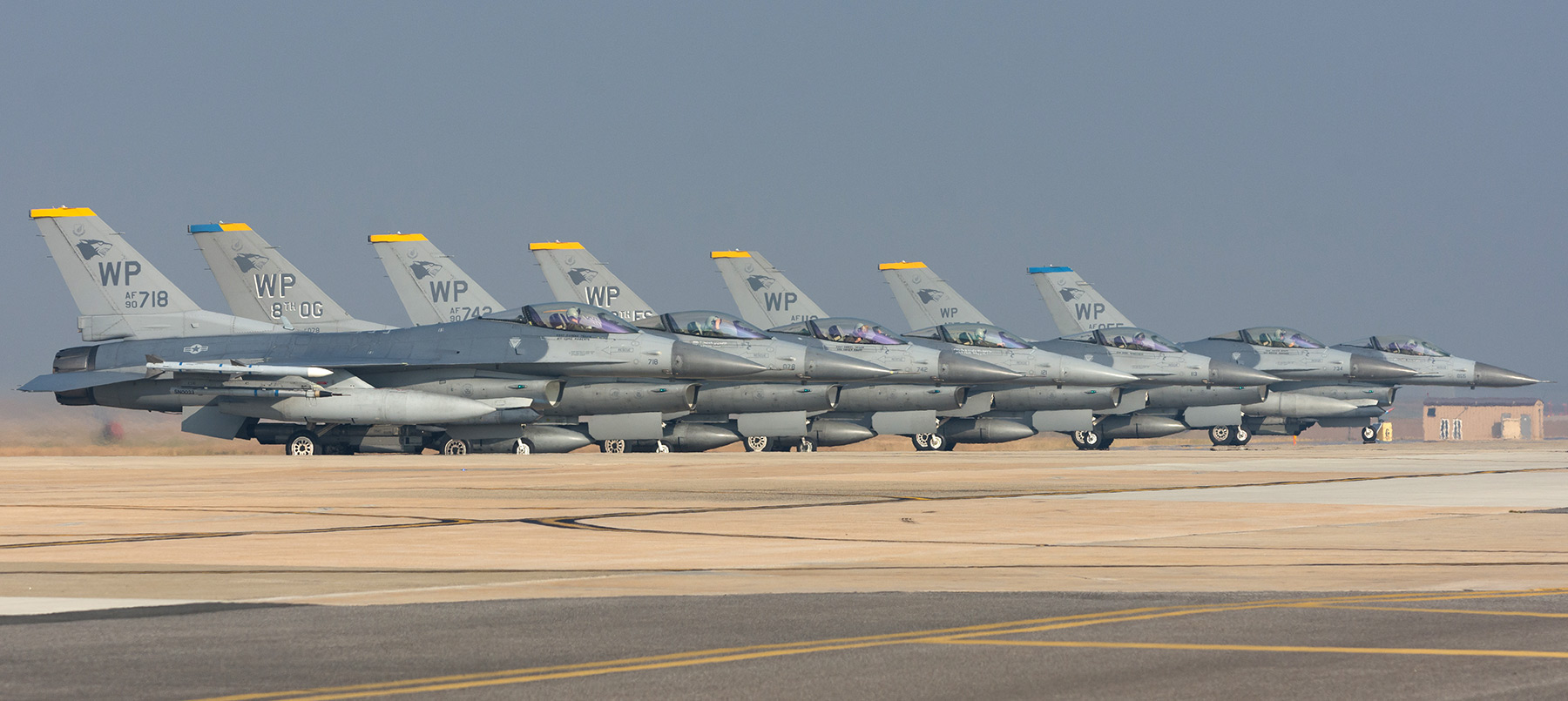
Kunsan Air Base (Kunsan AFB), also known by the military designation K-8, is – along with Osan AFB – one of the two main USAF installations on the Korean Peninsula.
It is located at Gunsan Airport, about 10 kilometers west of the city of the same name, an important city overlooking the western coast, near the estuary of the Kum River, in the North Jeolla Province (Jeollabuk-do), approximately 240 kilometers south of the capital, Seoul.
Generally, the USAF uses the name Kunsan in reference to the base while using the name Gunsan when referring to the city, although sometimes the airbase is referred to by the name of the city itself.
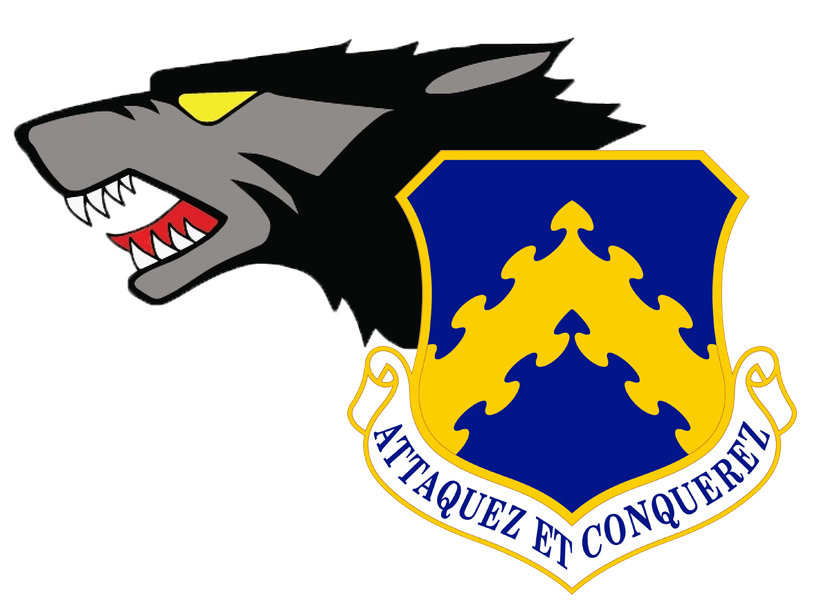
Part of the massive U.S. military presence in South Korea, the base is home to the 8th Fighter Wing (8th FW) “Wolf Pack,” which, together with the 51st Fighter Wing (51 FW) at Osan, forms the 7th Air Force, which in turn is part of the United States Pacific Air Forces (PACAF) that constitutes the Major Command (MAJCOM) of the air component of the United States Pacific Command (USPACOM). The Unified Command of the United States Armed Forces is responsible for the Pacific Ocean area and much of the Indian Ocean area.
It has the peculiarity of being one of the few remaining “warrior bases” in the USAF, because it does not offer services or accommodations for families, and consequently, American personnel are generally subject to a faster rotation compared to other U.S. air units, with a typical stay at the installation of about a year.
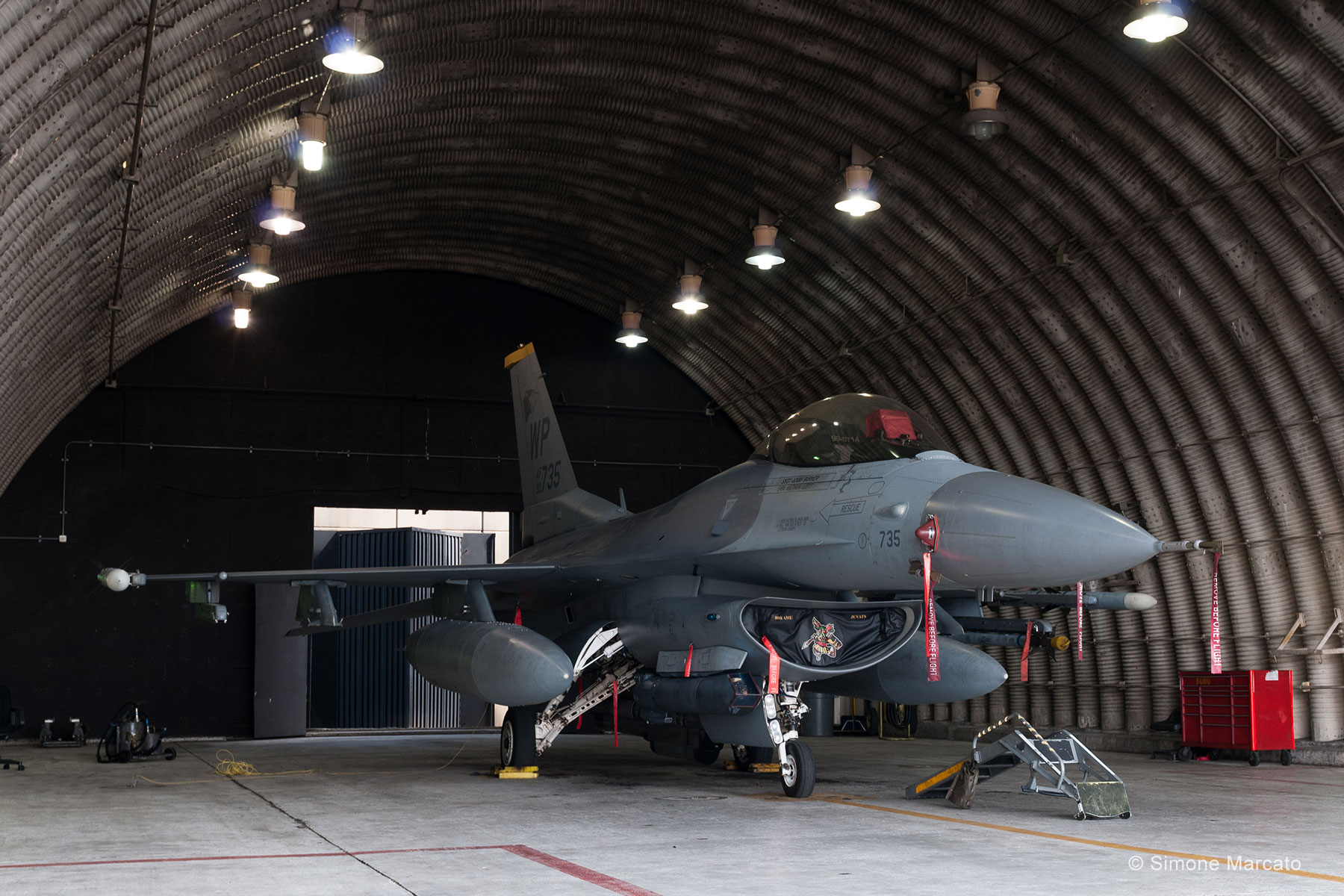
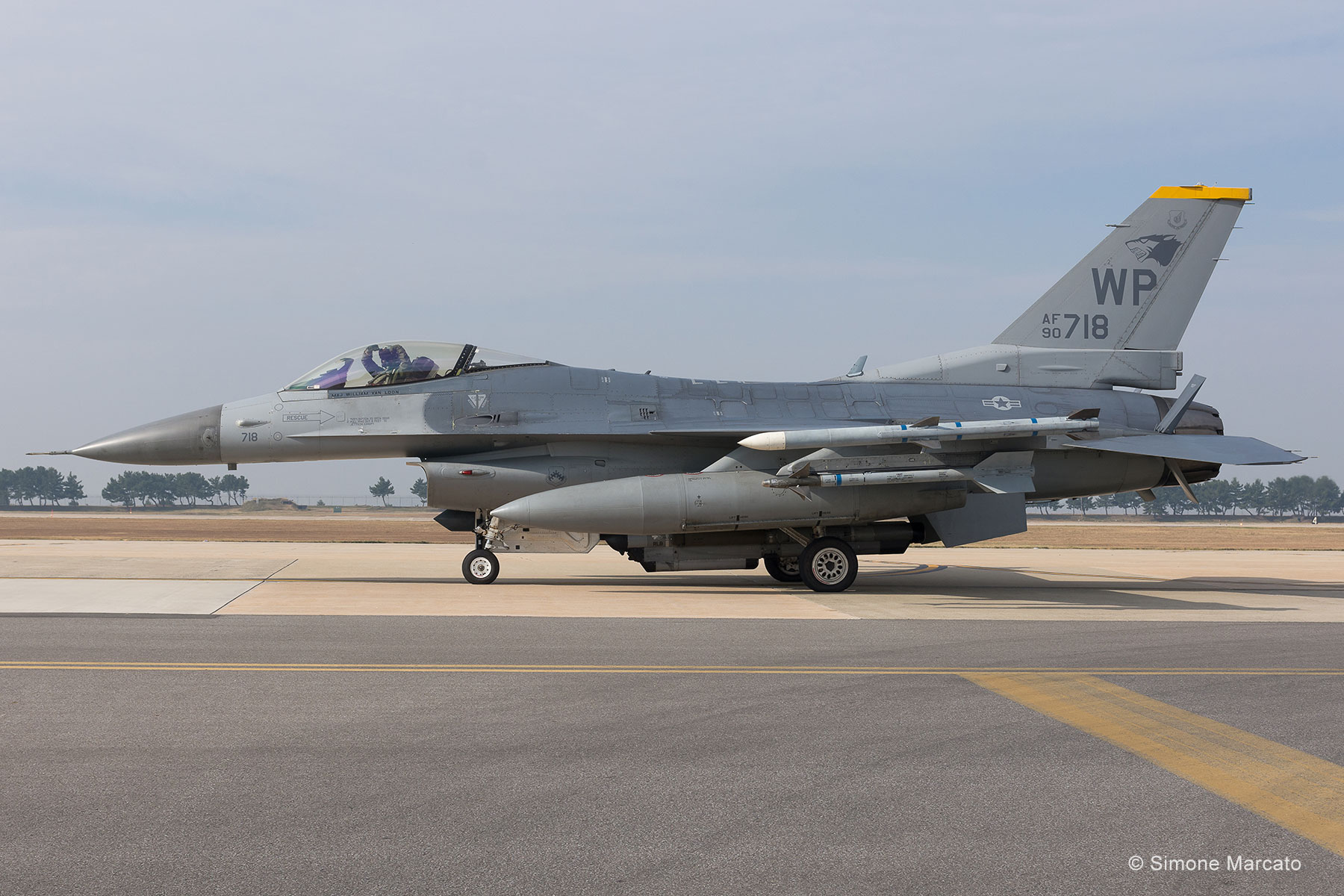
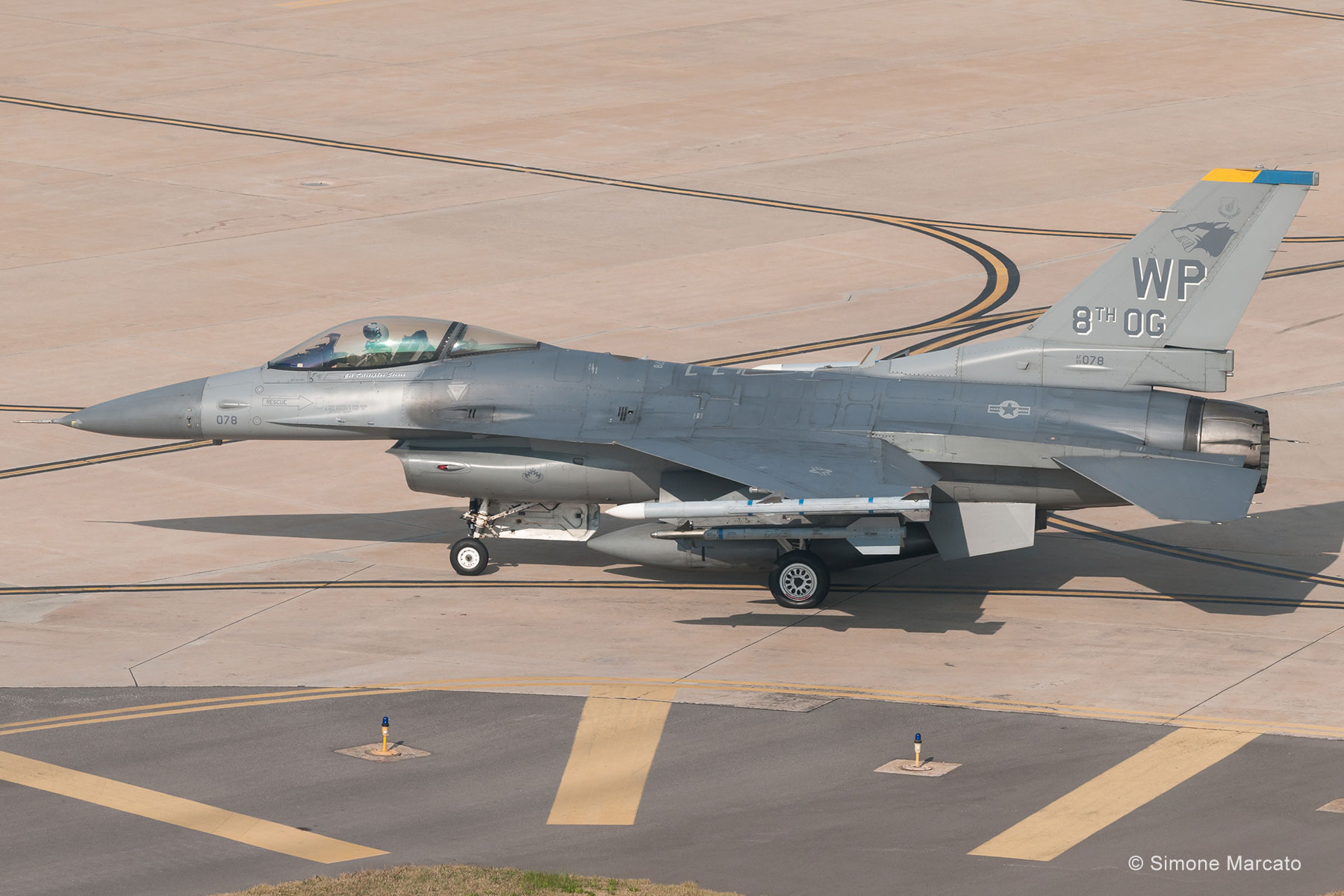
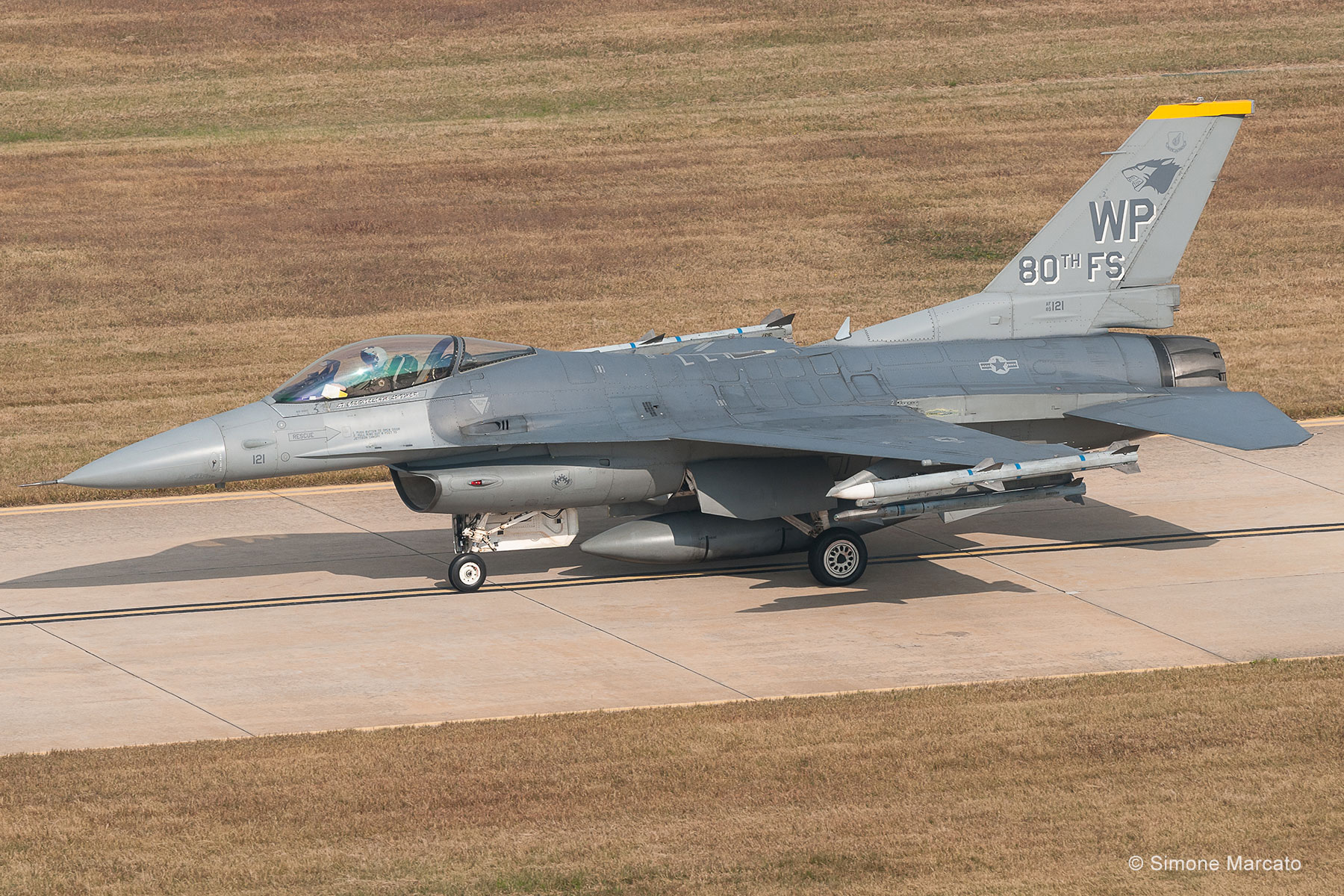
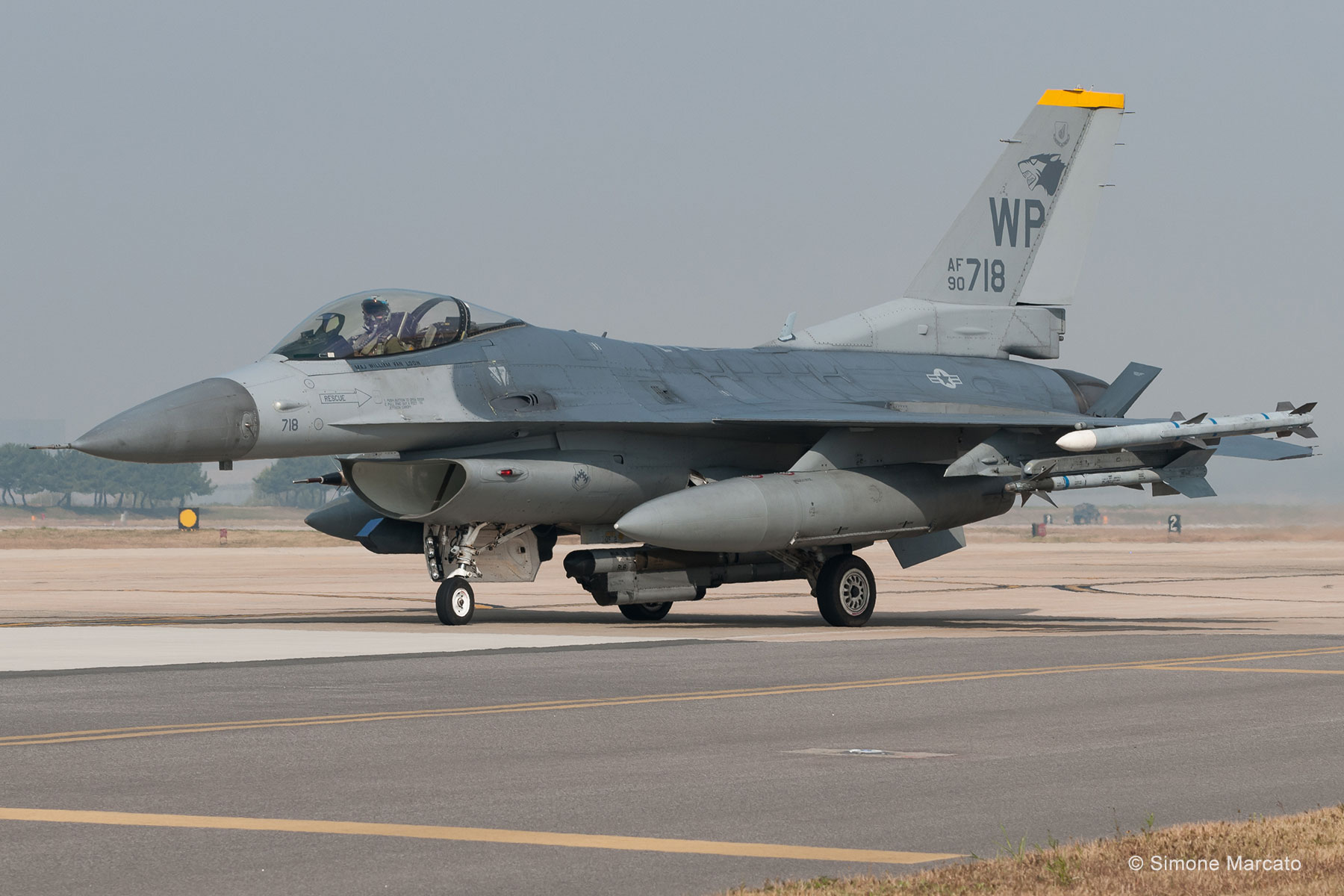
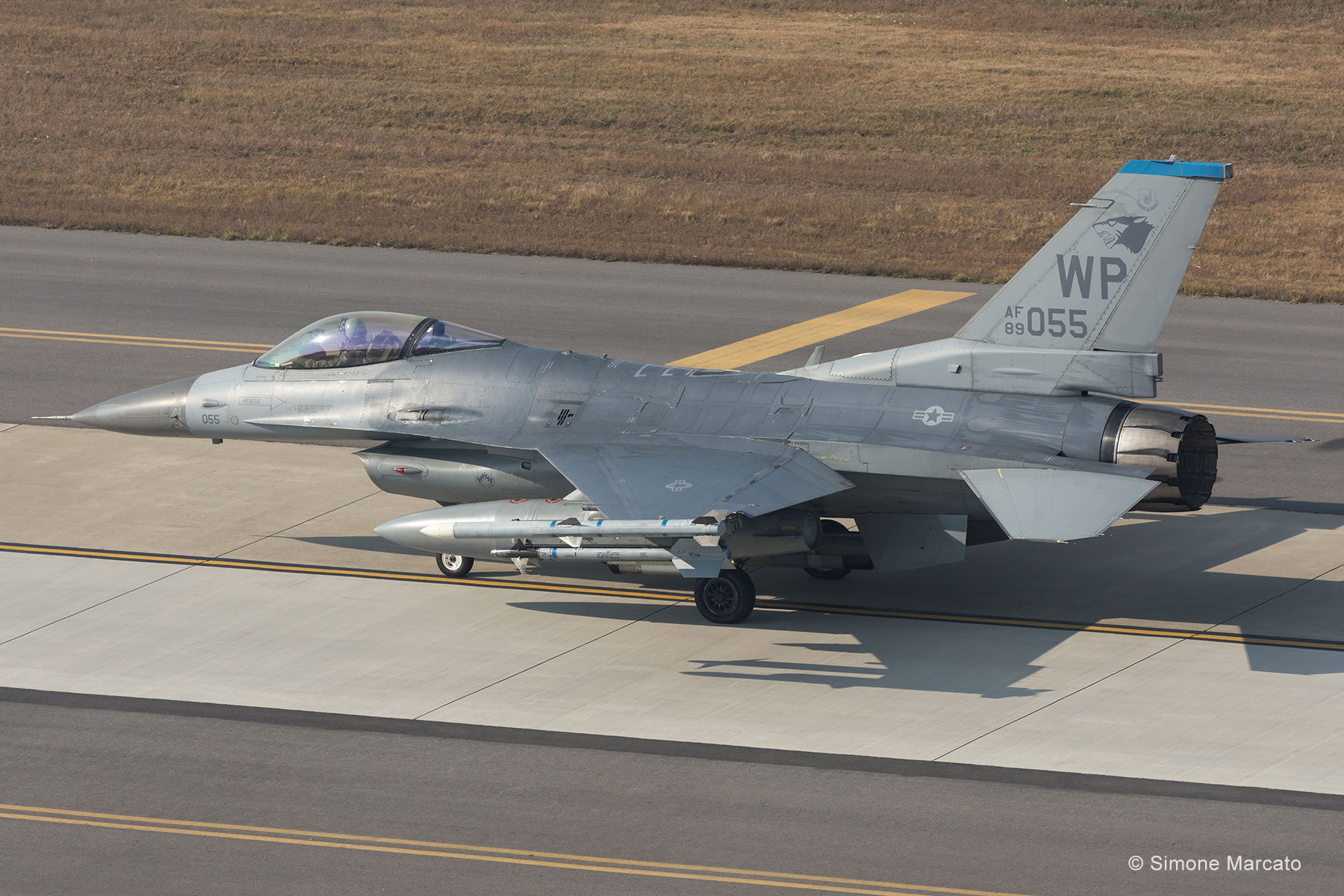
As of today, the personnel present at the U.S. base consists of approximately 2,800 USAF airmen, about twenty civilian employees of the Department of Defense, and around 400 Korean civilians.
To these, we must add just under 200 U.S. Army personnel, belonging to the 2nd Battalion (Alpha Company), 1st Air Defense Artillery, 35th Air Defense Artillery Brigade, who manage the Patriot PAC-3 surface-to-air missile battery (Patriot Advanced Capability) deployed within the airport. Their task is to protect the airbase from threats such as tactical ballistic missiles, cruise missiles, and enemy aircraft.

8th FIGHTER WING “WOLF PACK”
“Defend the Base. Accept Follow-On Forces. Take the Fight North!”
Nowadays, the Korean Peninsula is still considered one of the “hottest” spots in the world, where a “cold war” climate still prevails after the 1953 armistice between the Republic of Korea and the Democratic People’s Republic of Korea. The Wing’s motto “Defend the Base. Accept Follow-On Forces. Take the Fight North!” perfectly illustrates its mission and the situation in which it is called to operate.
In this context of continuous tensions with the northern neighbor, the 8th FW trains continuously, carrying out air-to-air missions for air superiority and air interdiction, air-to-ground missions for ground attack, CAS (Close Air Support), and SEAD (Suppression of Enemy Air-Defence), operating alone or jointly with the South Korean ally, which deploys a combat air unit in Kunsan.
The origins of the 8th Fighter Wing date back to after the end of the Second World War, specifically in August 1948 when it was established in Japan, with air defense duties. At the outbreak of hostilities in Korea, it was immediately deployed to provide air cover to the United States and South Korean units retreating from the North Korean invasion. During the conflict, on January 20, 1951, it was renamed the 8th Fighter-Bomber Wing, changing its duties, and from that moment until the armistice, it was almost entirely employed in air-to-ground missions. After the war, it was transferred to Japan, to Itazuke, where it remained for ten years, changing its name to 8th Tactical Fighter Wing (8th TFW).
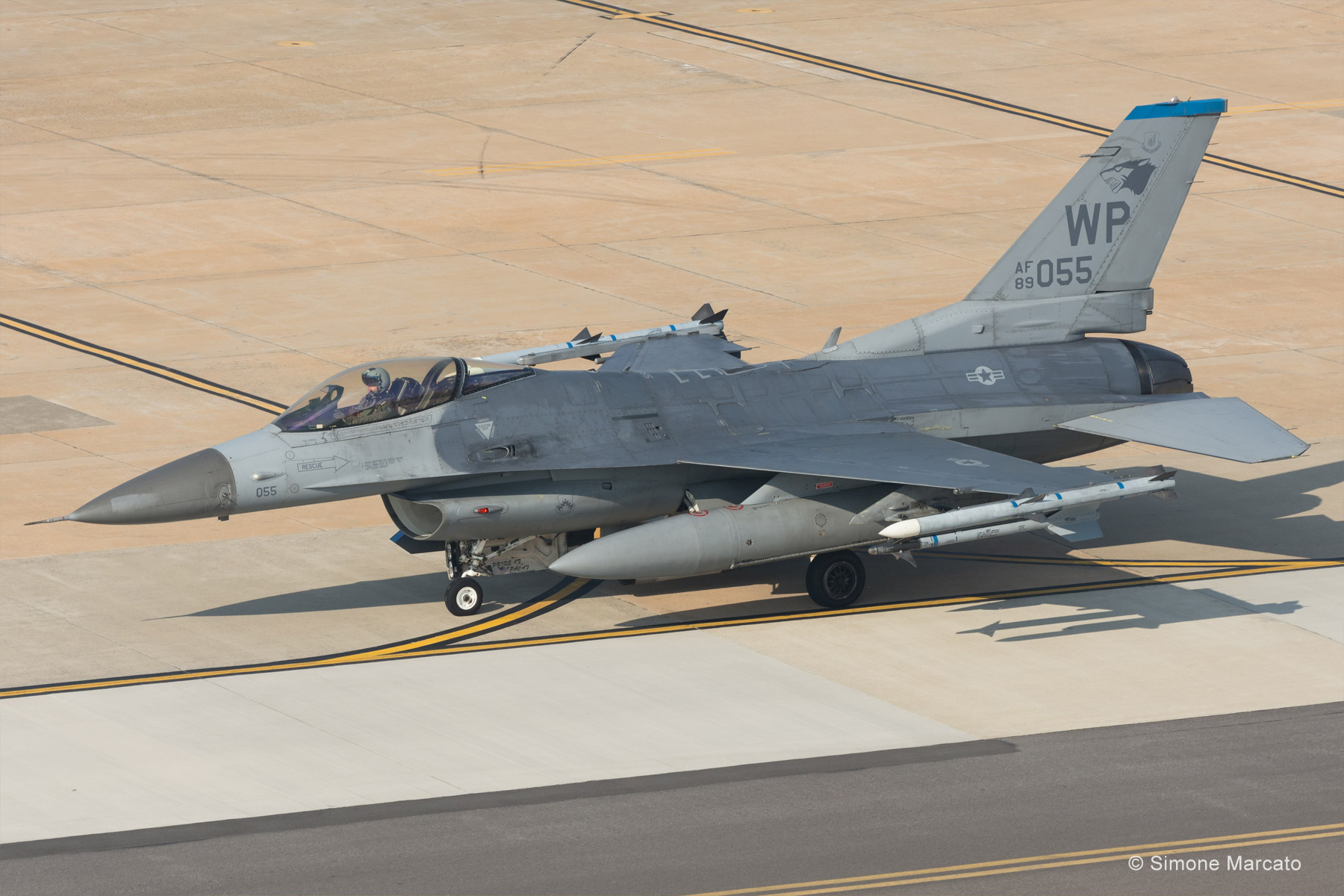
Starting from September 1965, the 8th TFW took part in the Vietnam War, where it further enhanced its reputation, especially under the command of Colonel Robin Olds, who used to refer to his unit as the “Wolf Pack” both for the aviators’ great ability to work in groups and for their aggressiveness. During this period, the unit became known for its innovative operational tactics and the skill of its pilots in aerial combat, earning the nickname “MiG killers” with 38.5 confirmed aerial victories. A remarkable achievement, considering that most of the missions flown over North Vietnam were ground attack missions.
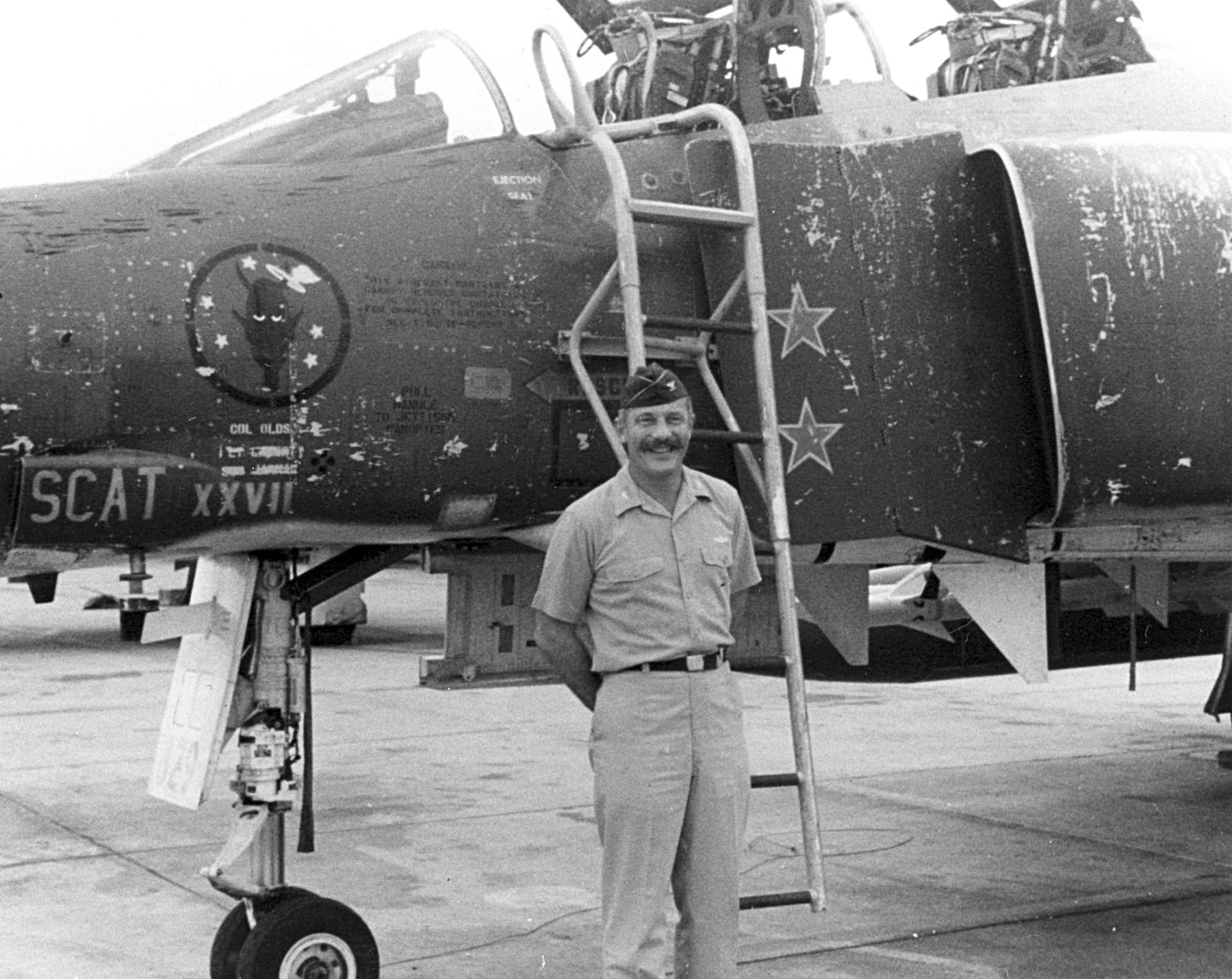
The 8th TFW was deployed to its current base in Kunsan in September 1974 and was assigned the two current flying groups: the 35th TFS and the 80th TFS. From this moment on, all the Wing’s aircraft had the letters WP of Wolf Pack painted on their tail fins, in honor of the service performed during the Southeast Asian War. In February 1992, it assumed its current designation of 8th Fighter Wing (8th FW).
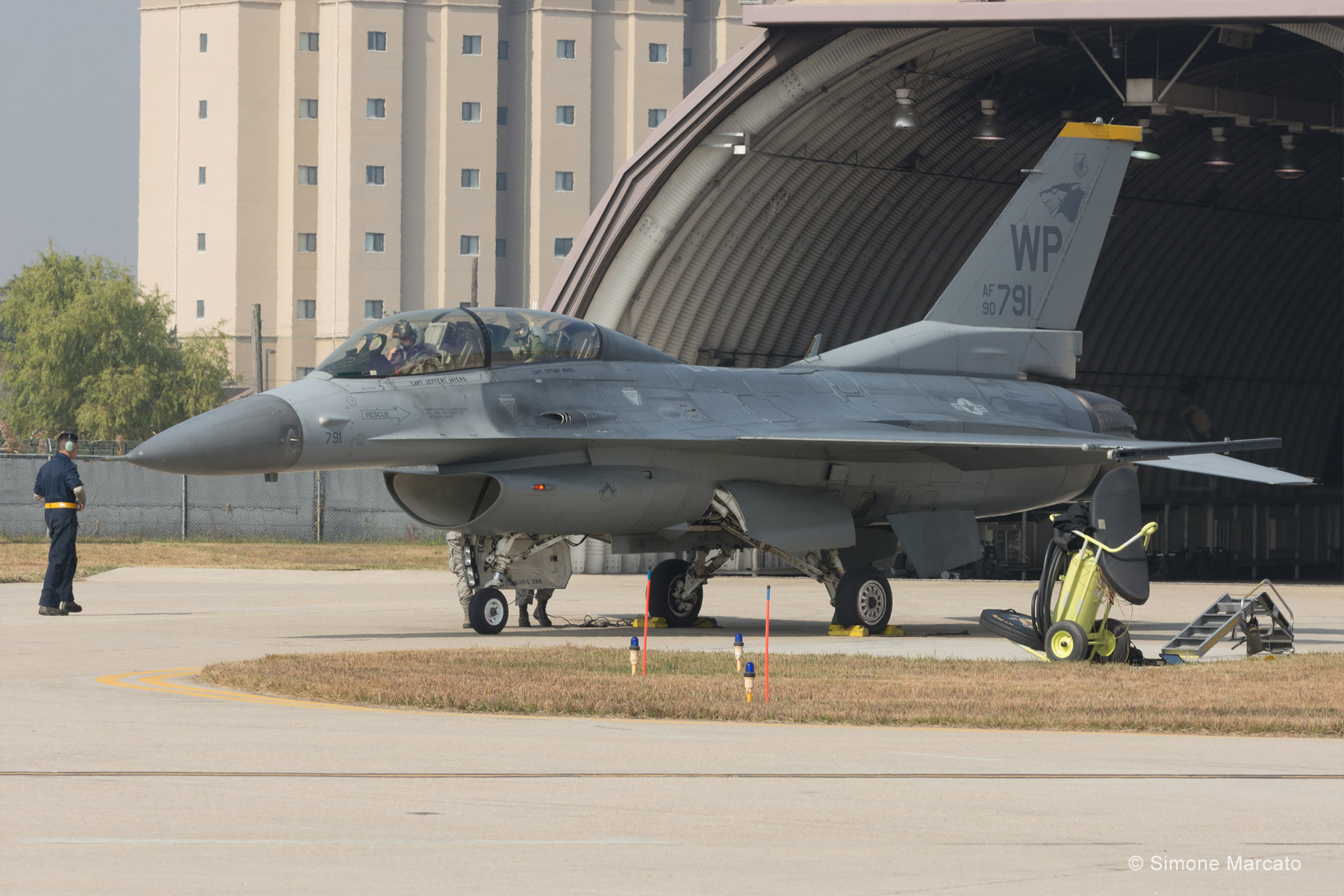
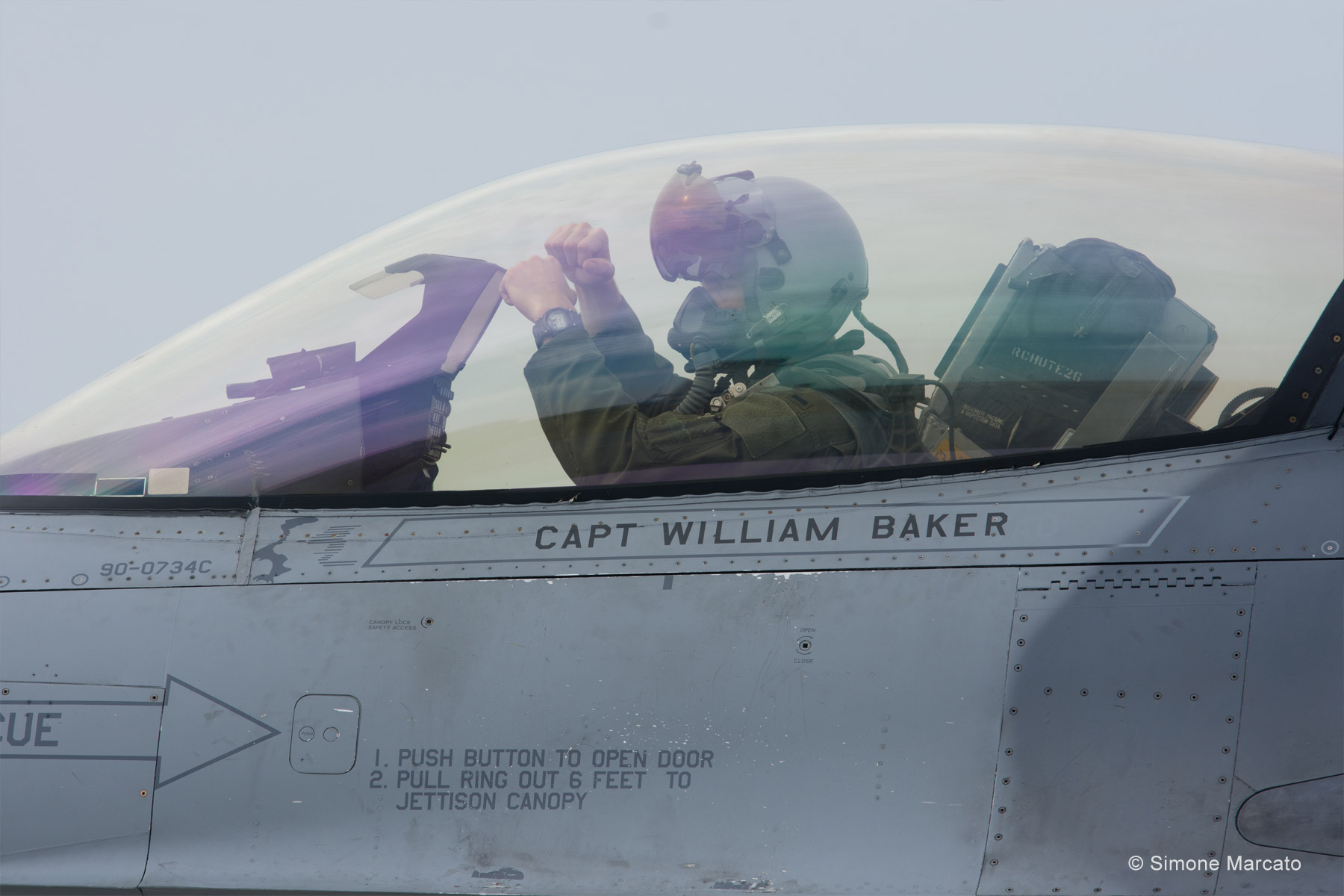
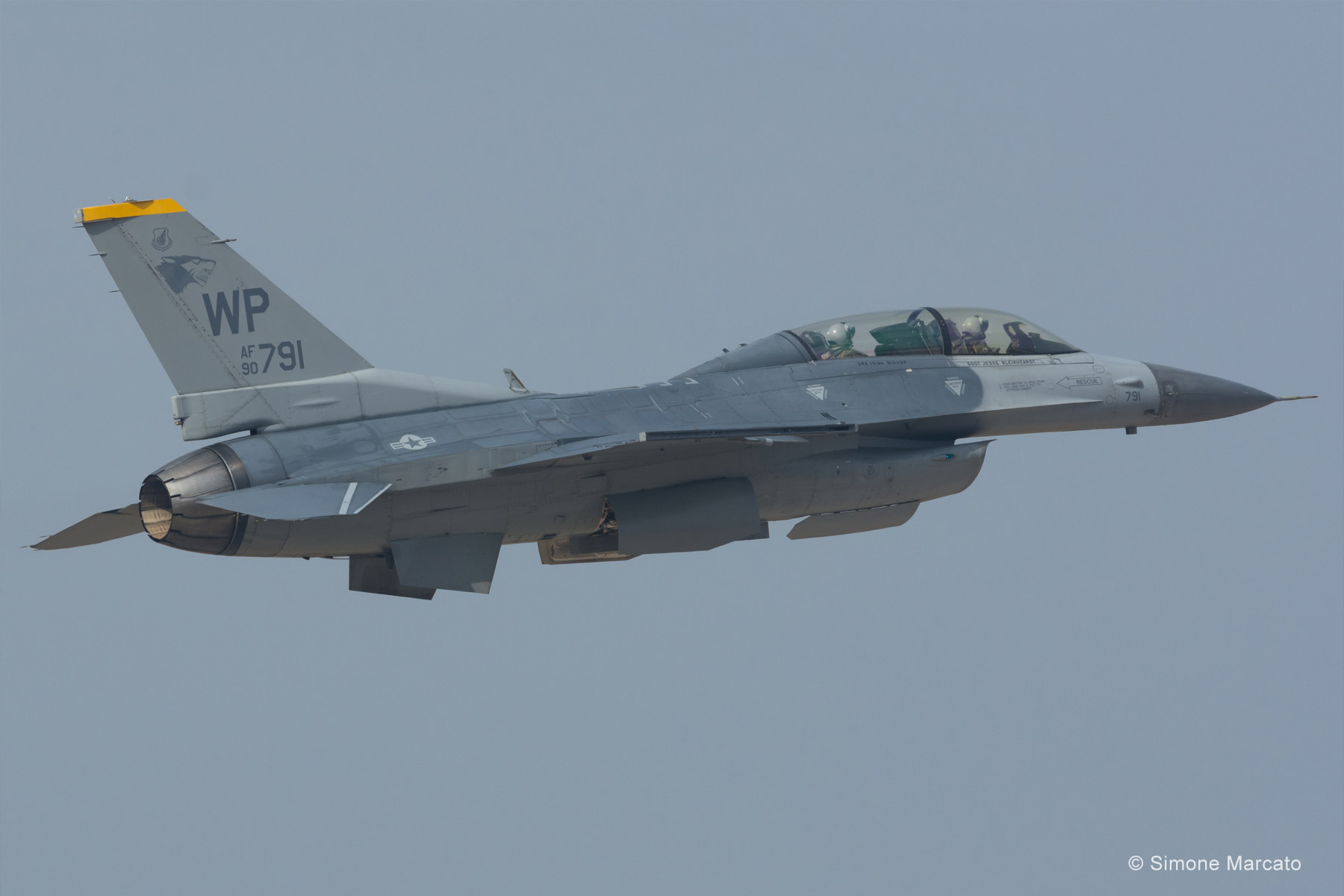

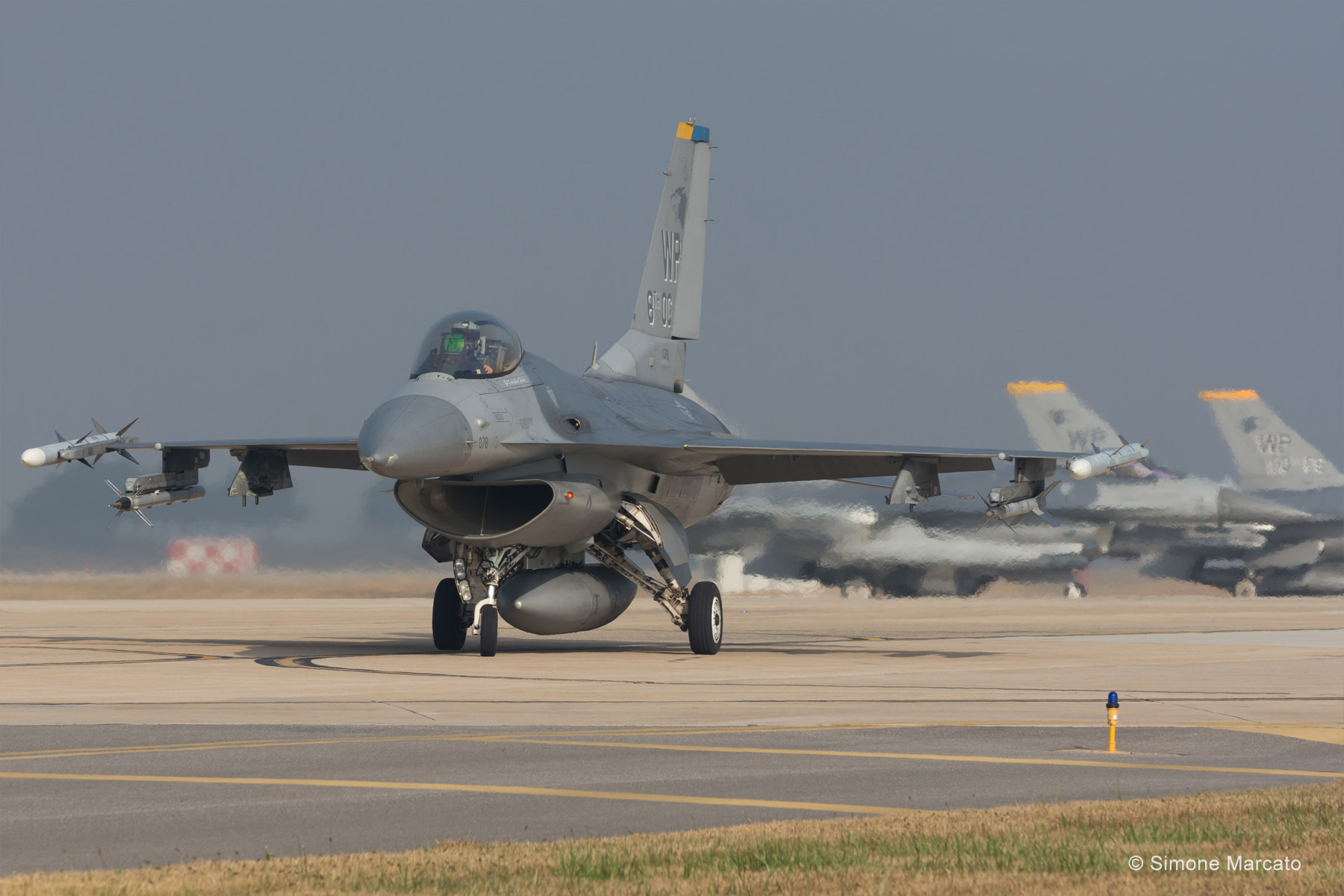
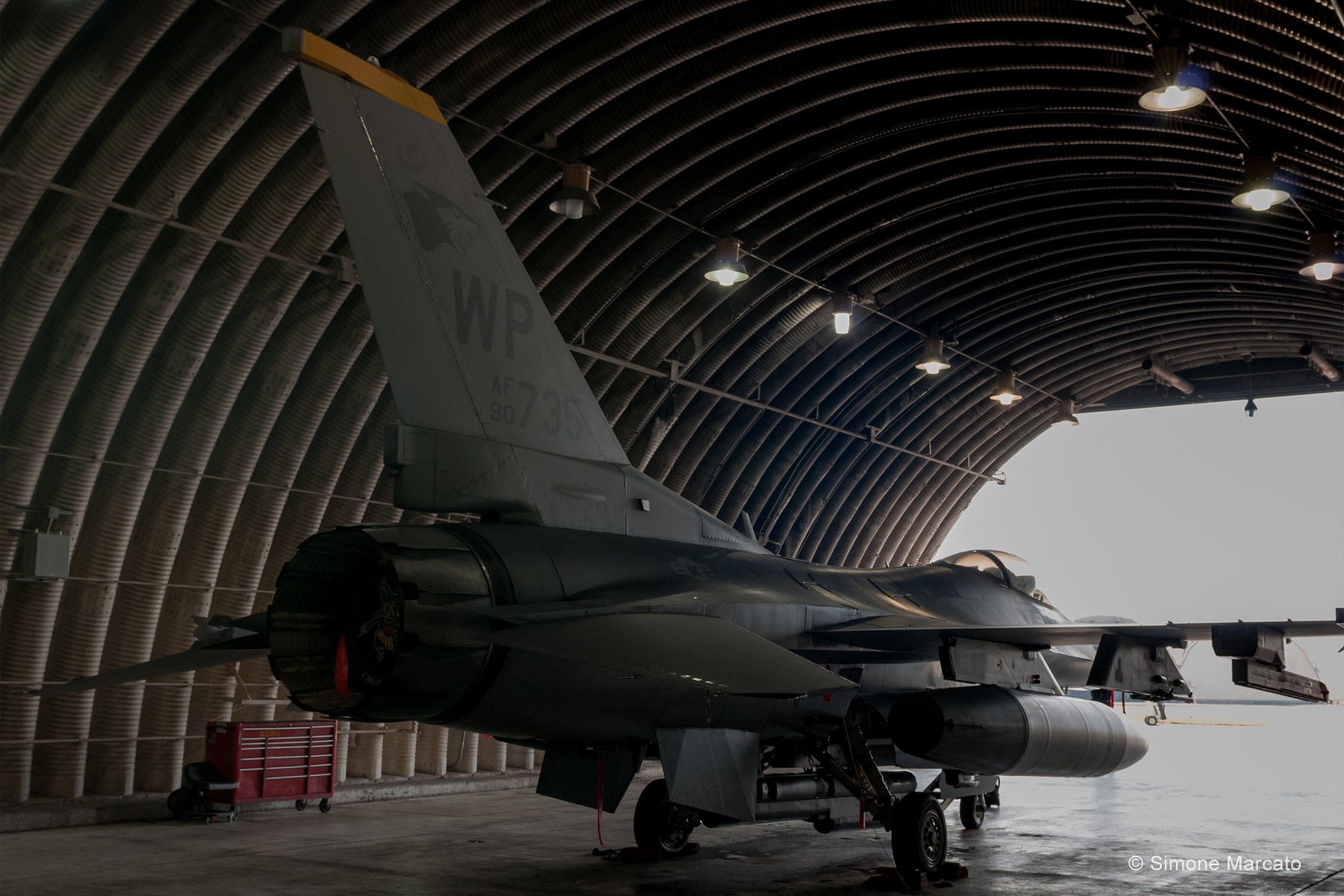
Currently the 8th FW consists of four groups, each with a specific function:
- 8th Operations Group (8th OG): the backbone of the 8th FW, responsible for the air operations and managing the crews for the 45 Lockheed-Martin F-16C/D Block 40 that currently equipped both 35th FS and 80th FS.
- 8th Maintenance Group: responsible for daily flight operations and maintenance of airplanes and their components and training of maintenance personnel assigned to the Wing.
- 8th Mission Support Group: manages both the civil engineering works and the essential services carried out in the base, deals with the defense of the base, communications, logistic readiness, supporting any Wing missions.
- 8th Medical Group: is responsible for managing the base’s medical clinic, providing healthcare services (such as flight medicine, general medicine, dentistry) to the base personnel.
The spearhead of the Wolf Pack is naturally its two flying squadrons, the 35th Fighter Squadron (35th FS) and the 80th Fighter Squadron (80th FS), both rich in history and among the most prestigious units of the USAF.
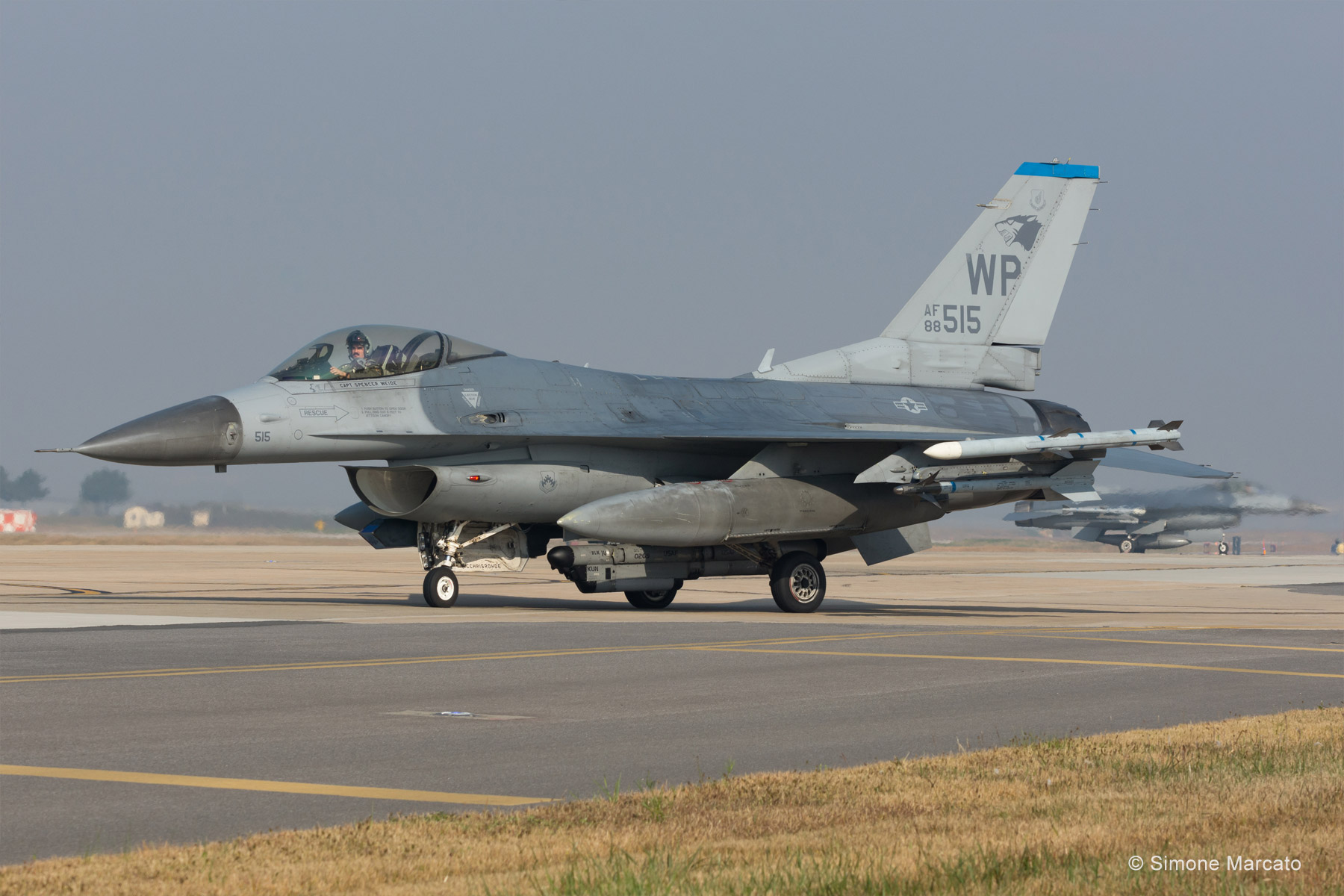
35th FS “Pantons”
The 35th Fighter Squadron, known as “Pantons,” is one of the oldest in the USAF, having been activated on June 12, 1917, as an aircraft maintenance unit. The unit participated in World War I, operating in France from September 1917 to February 1919. After the end of hostilities, upon returning to the United States, it was demobilized.
It was reconstituted as the 35th Pursuit Squadron in June 1932 at Langley Field, Virginia, and in 1939, the unit was designated the 35th Pursuit Squadron (Fighter), transferring to Mitchell Field, New York, and receiving the P-40 Warhawk aircraft.
In March 1942, in the midst of World War II, the unit began fighting in the Pacific, first based in Australia, and later in New Guinea, Leyte, and finally Okinawa. Flying with the P-40 and P-38 Lightning, it achieved 124 aerial victories. With the end of the war, he was re-equipped with the P-51 Mustang aircraft and transferred to the Fukuoka airbase in Japan.
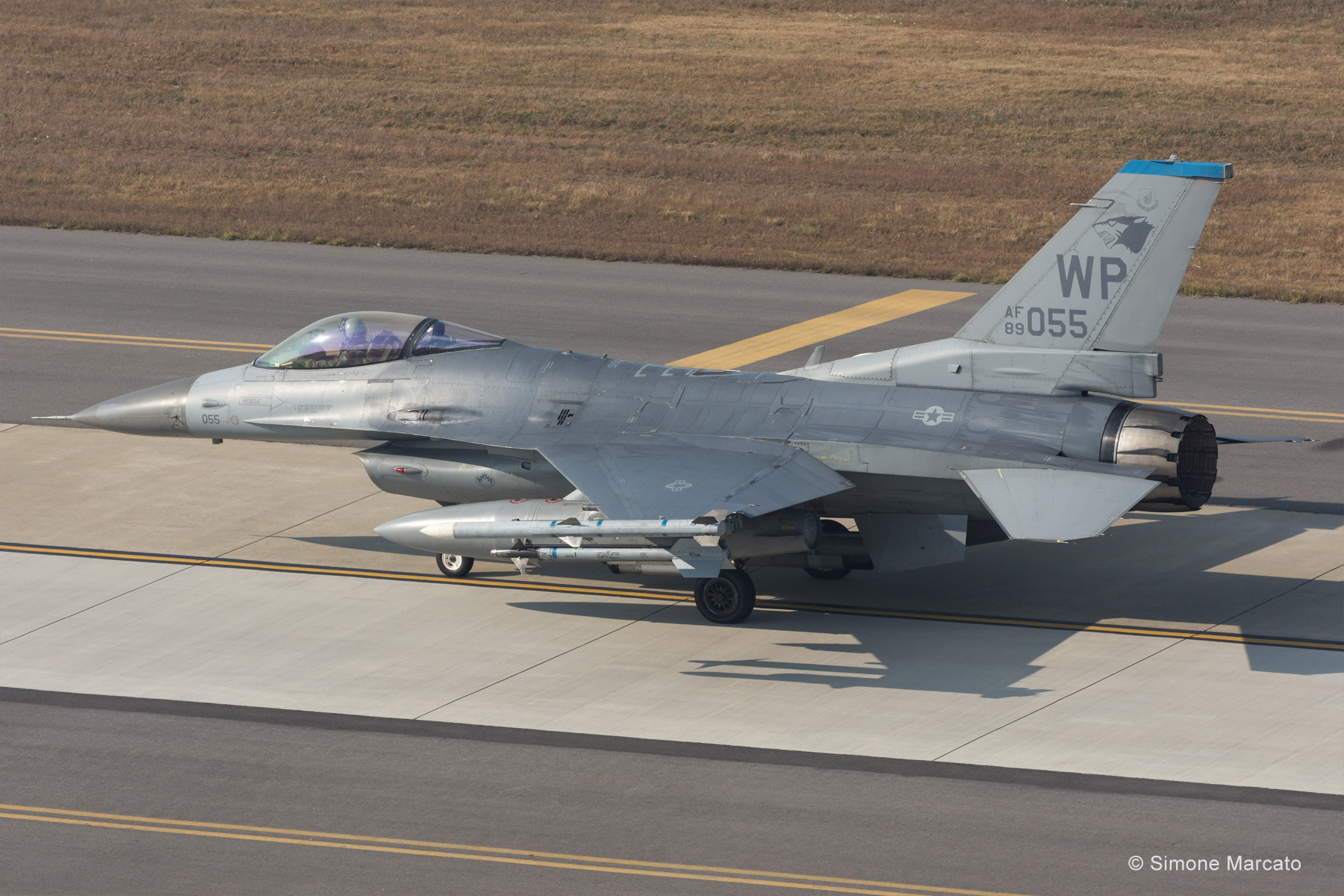
At the outbreak of the Korean War, under the new designation of 35th Fighter Bomber Squadron, it entered combat initially flying the F-80 Shooting Star and later the F-86 Sabre.
After the war on the Korean Peninsula ended, it was transferred to its new base, Itazuke Air Base in Japan, where it received the F-100 Super Sabre, later replacing them in 1963 with the powerful F-105 Thunderchief. In the same year, it was transferred to Yokota Air Base, also in Japan.
In 1964, the 35th Squadron (now known by the designation Tactical Fighter Squadron) was deployed to Korat, Thailand, and was one of the first units to take part in the conflict in Southeast Asia. Subsequently, it was transferred to Osan Air Base in the Republic of Korea.
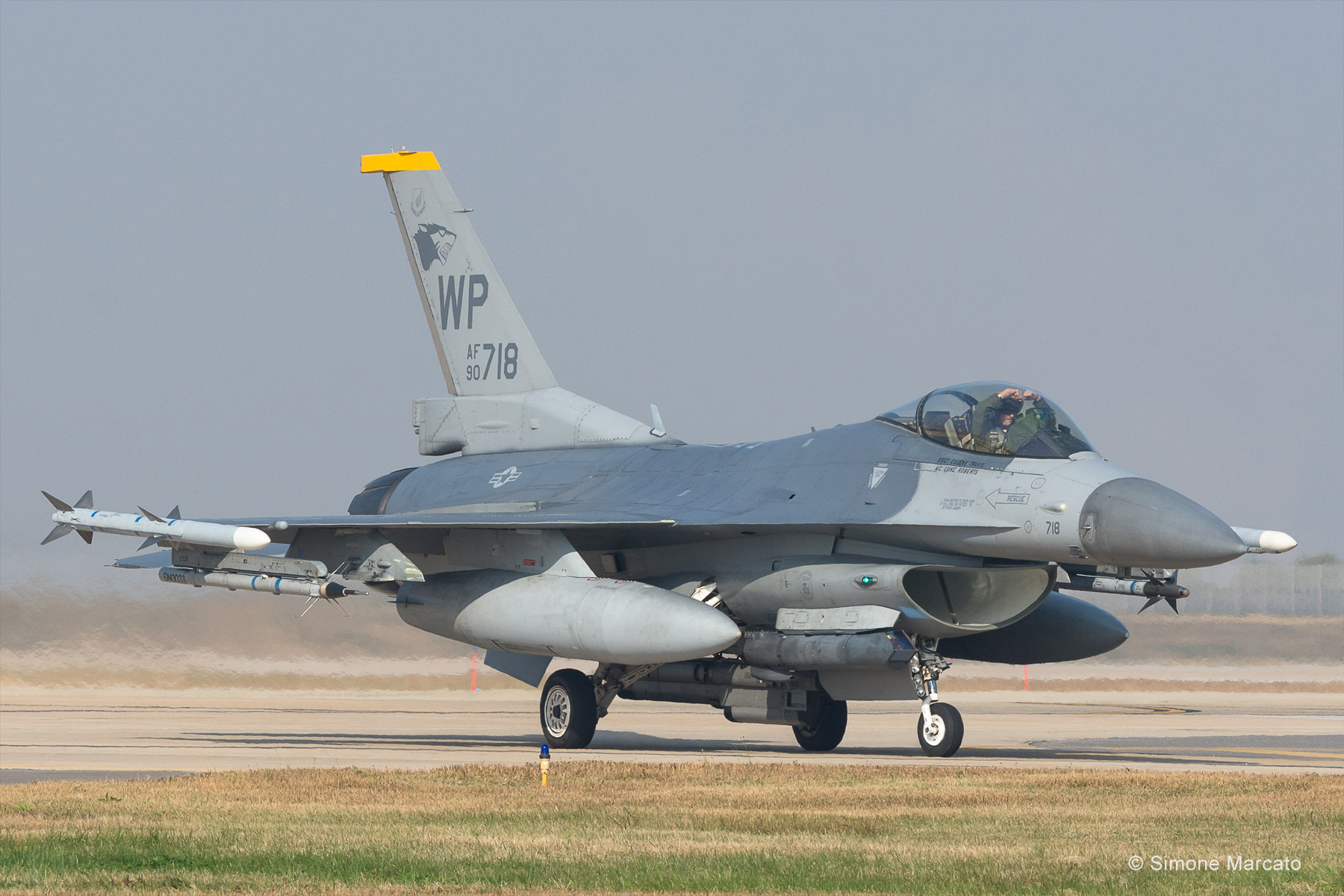
On March 15, 1972, the 35th TFS permanently moved to Kunsan and was re-equipped with F-4 Phantom II until September 1981, when, along with the 80th Tactical Fighter Squadron, it became the first overseas unit to receive the new General Dynamics F-16 Fighting Falcon fighters. On January 31, 1992, it assumed its current designation of 35th Fighter Squadron (35 FS).
On November 17, 2000, the 35 FS received its first F-16 Block 40, completing the conversion to this model in February 2001. Its aircraft are distinguished by the light blue stripe applied on top of the vertical stabilizer.
80th FS “Juvats”
The 80th Fighter Squadron “Juvats” was originally activated as the 80th Pursuit Squadron on January 6, 1942 – in the midst of World War II – at Mitchell Field, New York, flying P-39s. It took part in the Pacific War, and the first combat mission departed from Port Moresby, New Guinea, on July 22, 1942. The 80th Squadron achieved its first victory on August 26, when it engaged and destroyed six enemy aircraft, the first of 225 shootdowns obtained throughout the course of the conflict, a number that places the 80th Pursuit Squadron second in terms of victories achieved in the Pacific Theater.
In January 1943, the 80th Pursuit Squadron was re-equipped with the Lockheed P-38 Lightning, with which it operated for the rest of the war.
From its first combat base in New Guinea, it moved through Borneo and the Celebes Islands, in the East Indies and the Philippines, providing air support between 1943 and 1944 for the landings in the archipelago. He moved to Okinawa on August 29, 1944, and flew his first mission against the Japanese mainland the following day. On August 12, 1945, the unit flew its last combat mission of the war.
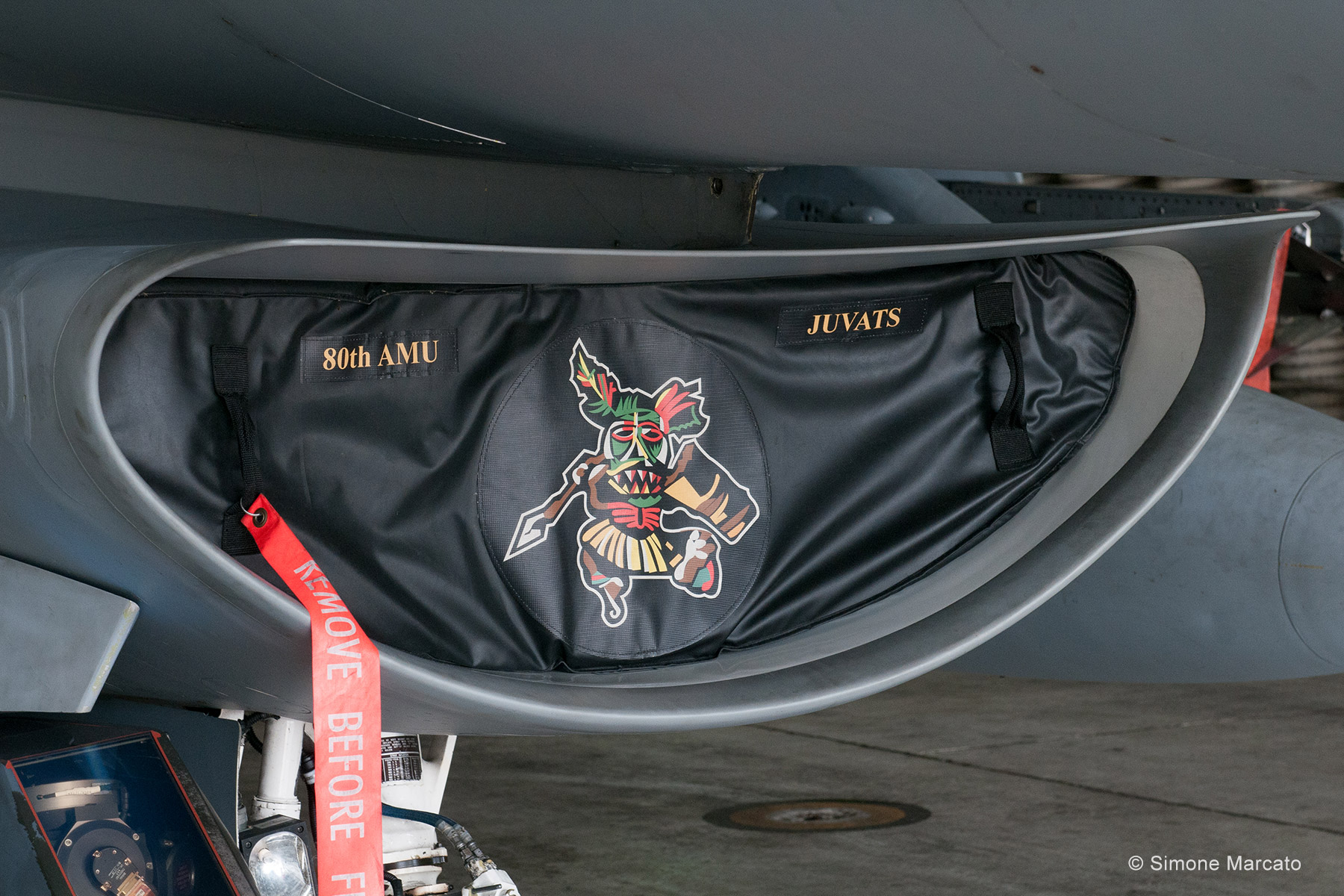
In the post-war period, the unit moved to the Itazuke Air Base in Japan, converting from the P-51 to the jet fighter F-80 Shooting Star. Here it assumed the new designation of 80th Tactical Fighter Squadron.
The 80th TFS was one of the first units to take part in the fighting on the Korean Peninsula, covering the evacuation of Americans from Seoul on June 26, 1950, after the North Koreans moved south of the 38th parallel the previous day. Moreover, it was the first unit to fly a combat mission with jet aircraft, remaining engaged in combat throughout the entire conflict.
After the war, it was converted at Kadena, in Japan, first to F-84s and then to F-86s. In 1956, it returned to Itazuke to become one of the first units to convert to the F-100 Super Sabre. In the summer of 1963, it was once again re-equipped, this time with F-105 Thunderchiefs and relocated to Yokota.
With the outbreak of the Vietnam conflict, the 80th TFS was one of the first units to send pilots and aircraft to Thailand to fly combat missions against North Vietnam. Initially deployed to Korat, Thailand, from October 30 to December 29, 1964, it was subsequently deployed to Takhli – still in Thailand – from June 27 to August 15, 1965.
In the winter between 1967 and 1968, the conversion to the F-4C Phantom II began at Yokota Air Base, and also in January, he was involved in the USS Pueblo incident.
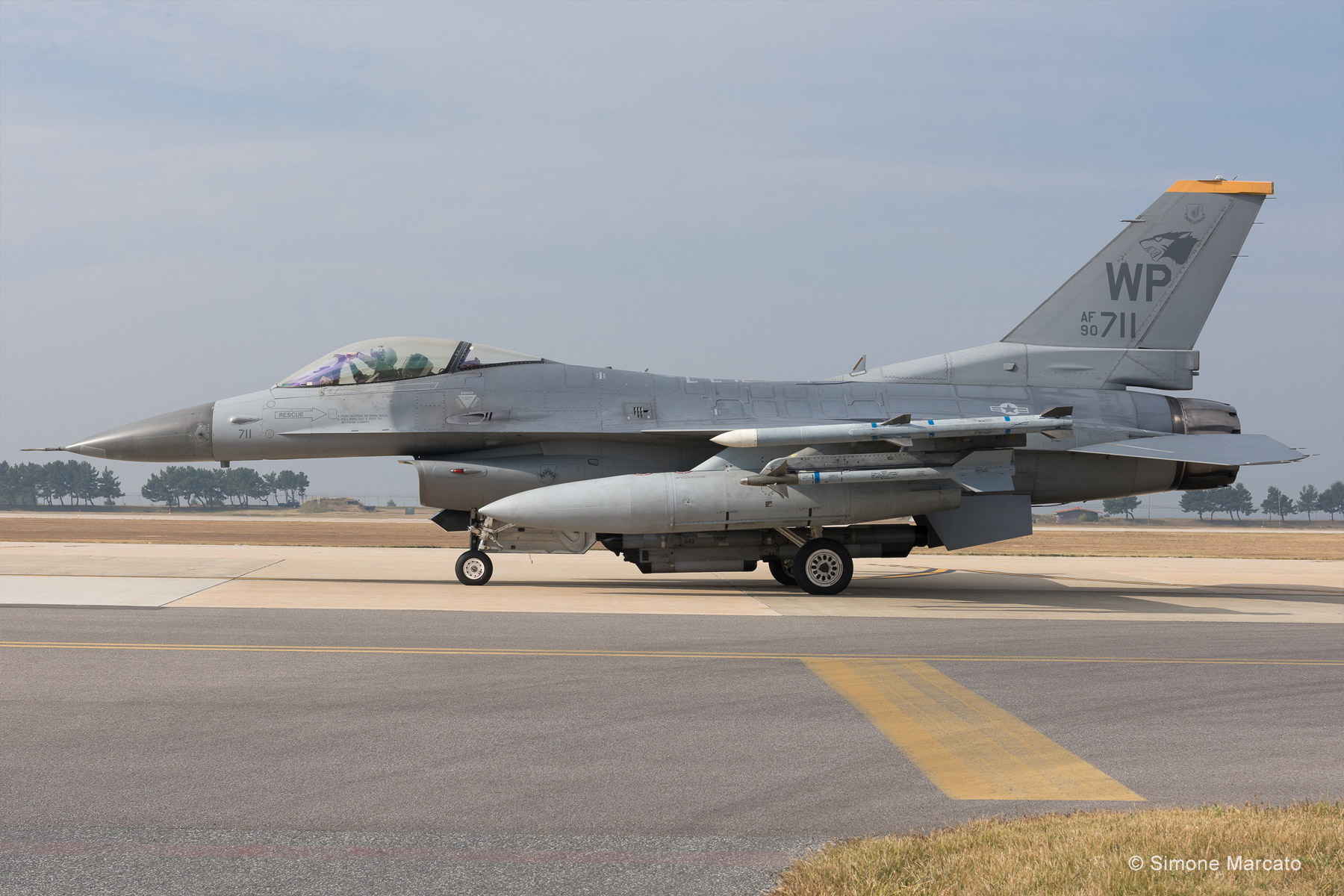
On February 15, 1971, the 80 TFS was permanently transferred from Yokota to Kunsan, coming under the command of the 8th Fighter Wing in 1974.
Simultaneously with the 35 FS, in September 1981, it became the first overseas-based unit to be equipped with the F-16 Fighting Falcon. On January 31, 1992, the 80 TFS was designated the 80th Fighter Squadron, and its F-16C/D Block 40s are recognizable by the yellow stripe on top of the vertical stabilizer.
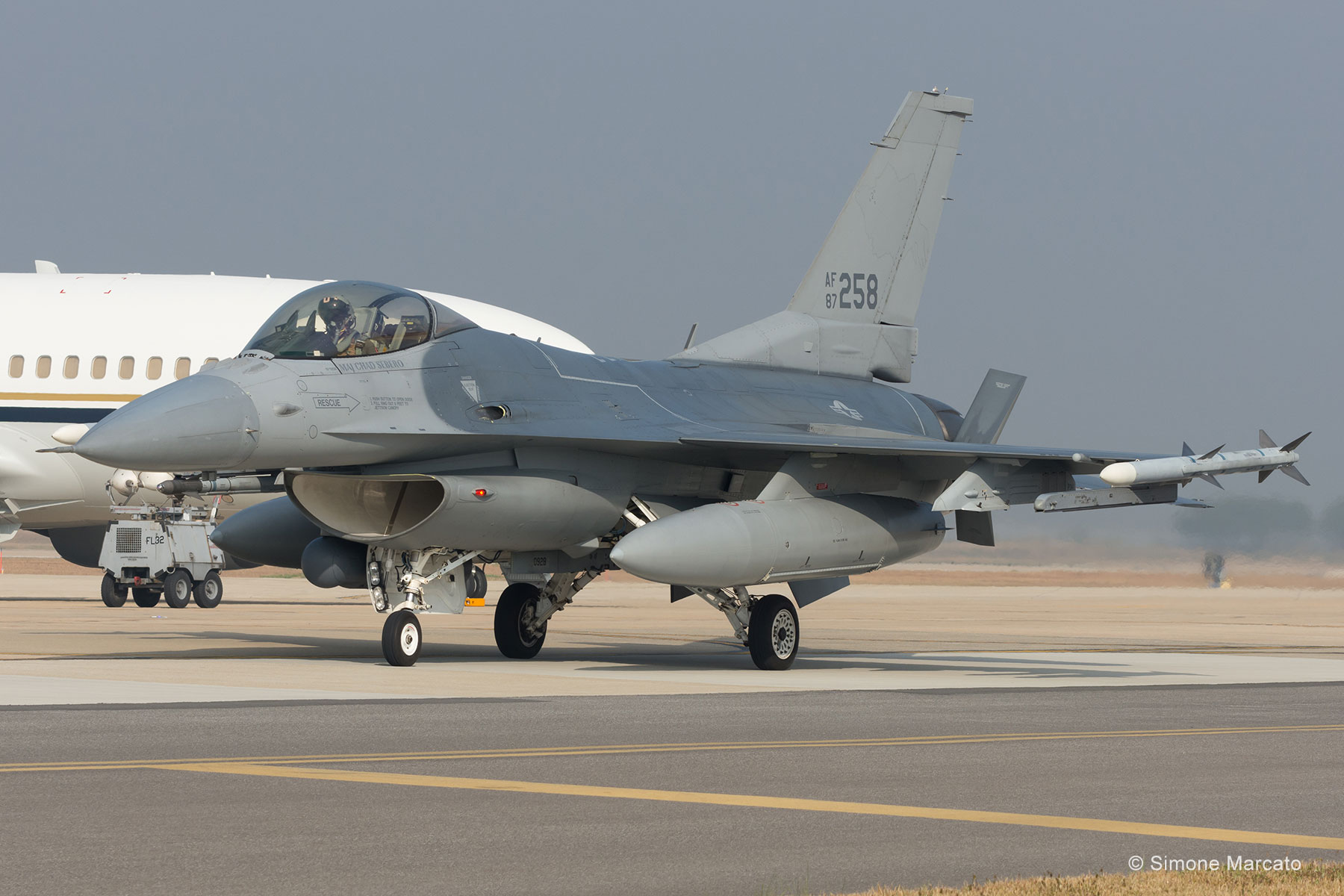
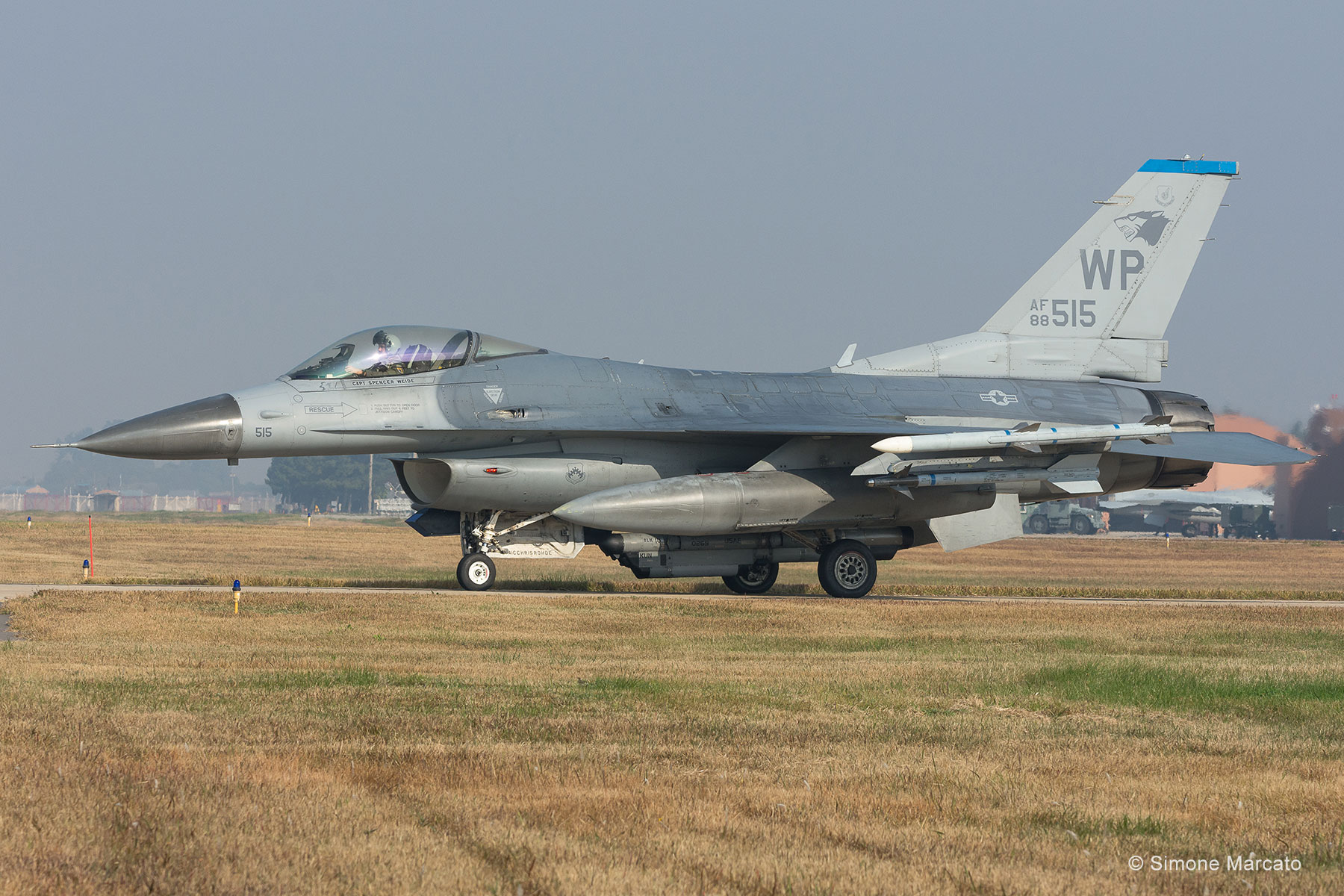
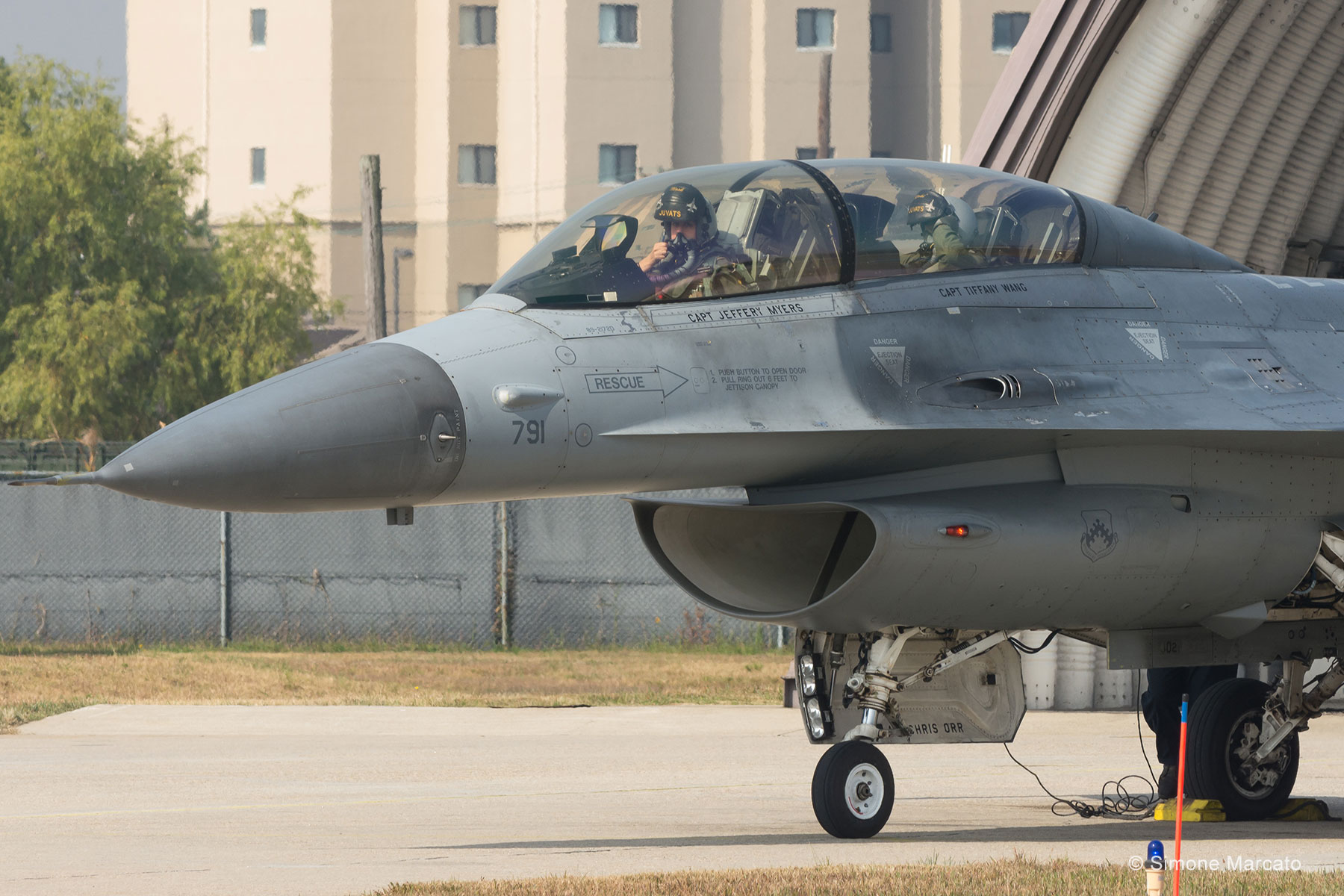
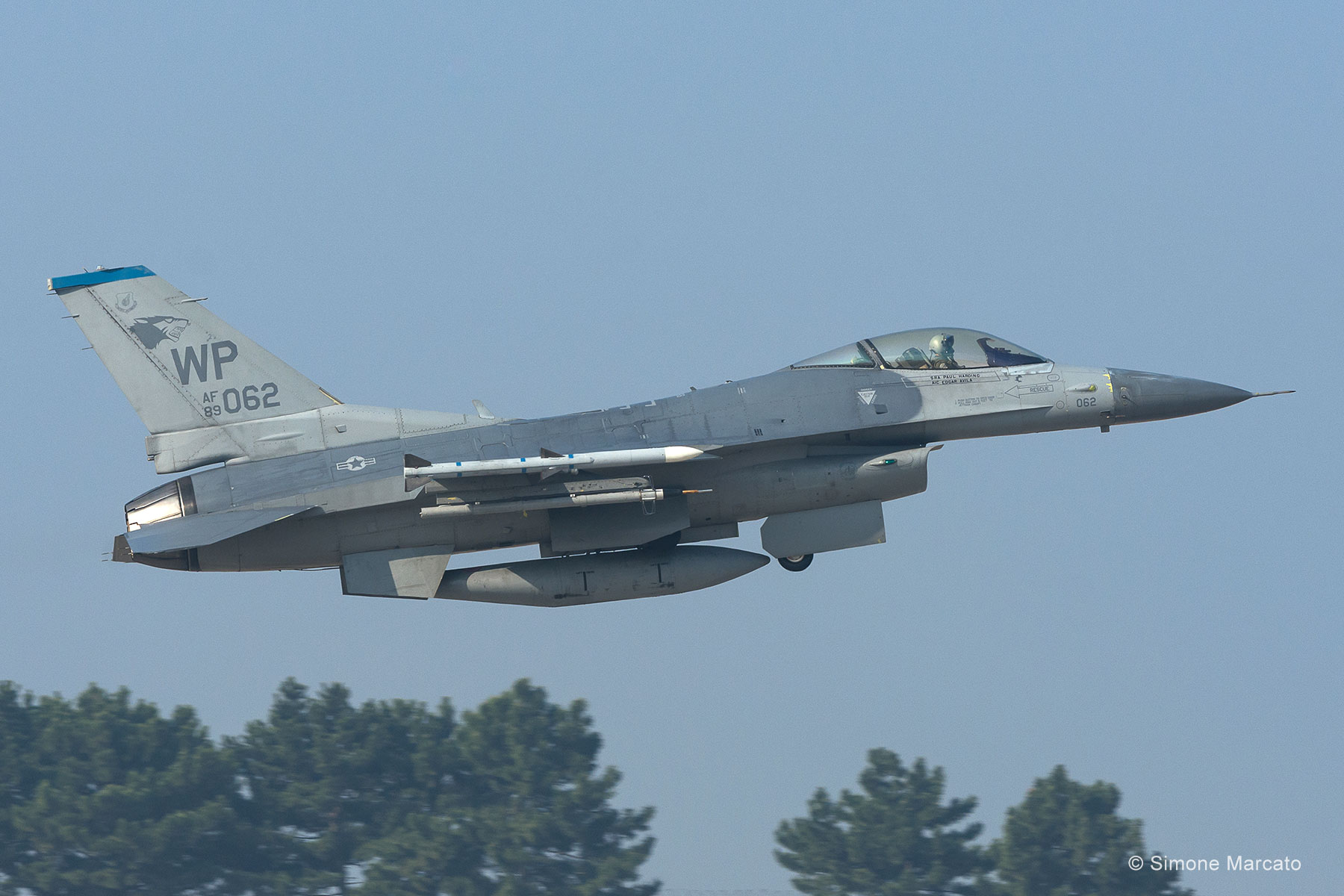
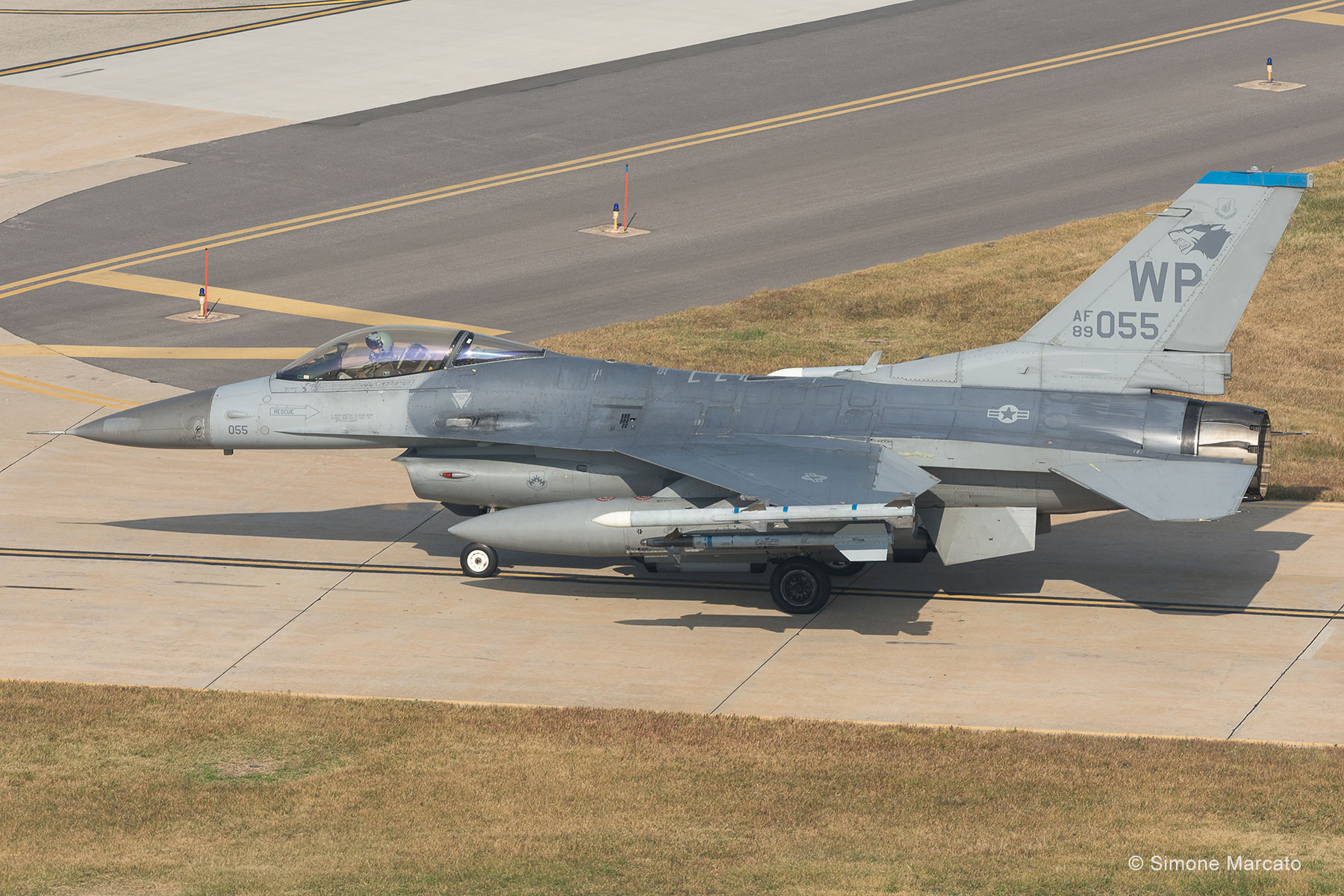
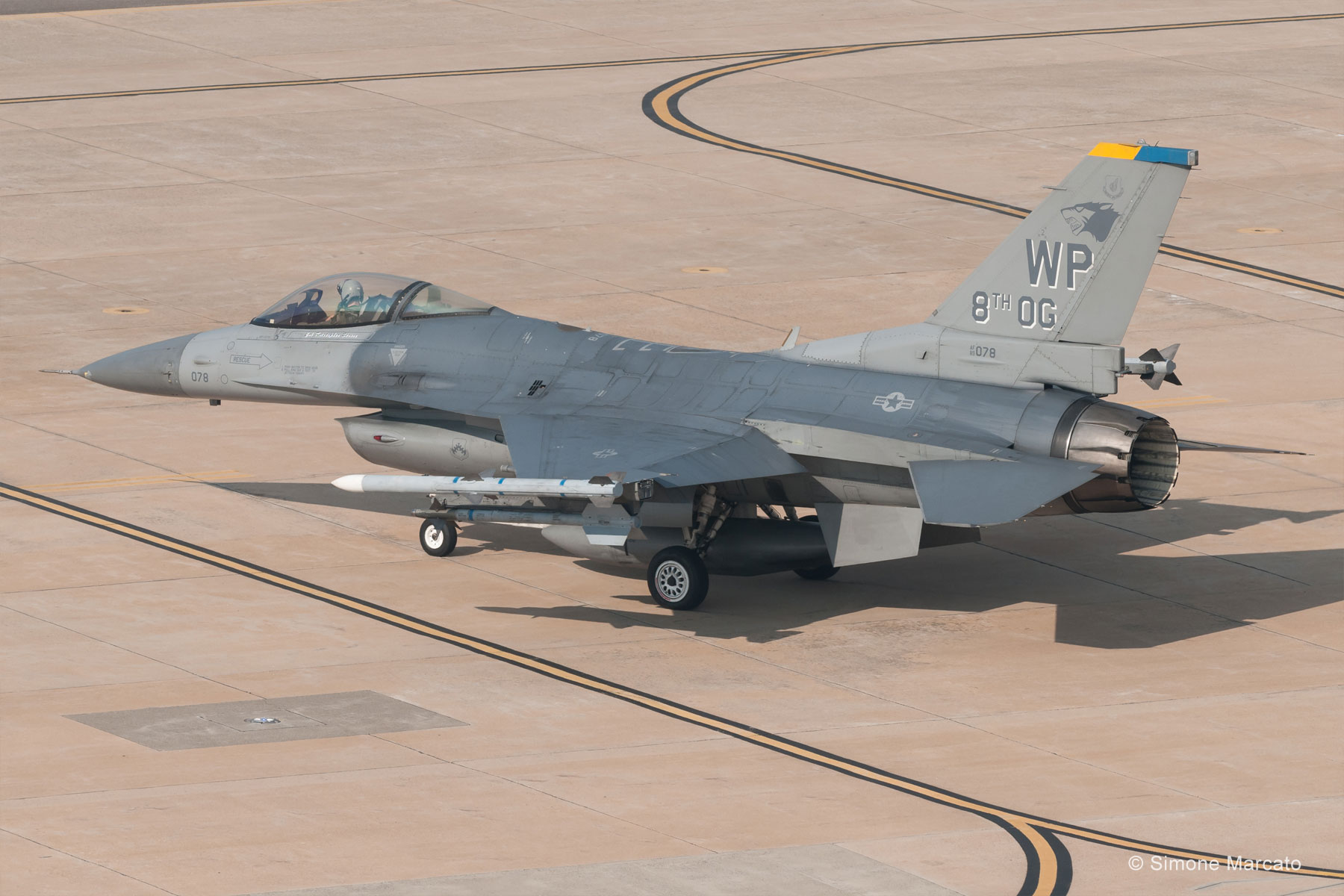
“Accept Follow-On Forces”: cooperation is essential
As mentioned, in addition to the U.S. unit, the base also hosts the 38th Fighter Group (under the command of the 10th Fighter Wing in Suwon) of the Republic of Korea Air Force (ROKAF) with the subordinate 111 Fighter Squadron, also equipped with Lockheed-Martin fighter-bombers, but in the KF-16C/D Block 52 version, built under license by Samsung Aerospace.
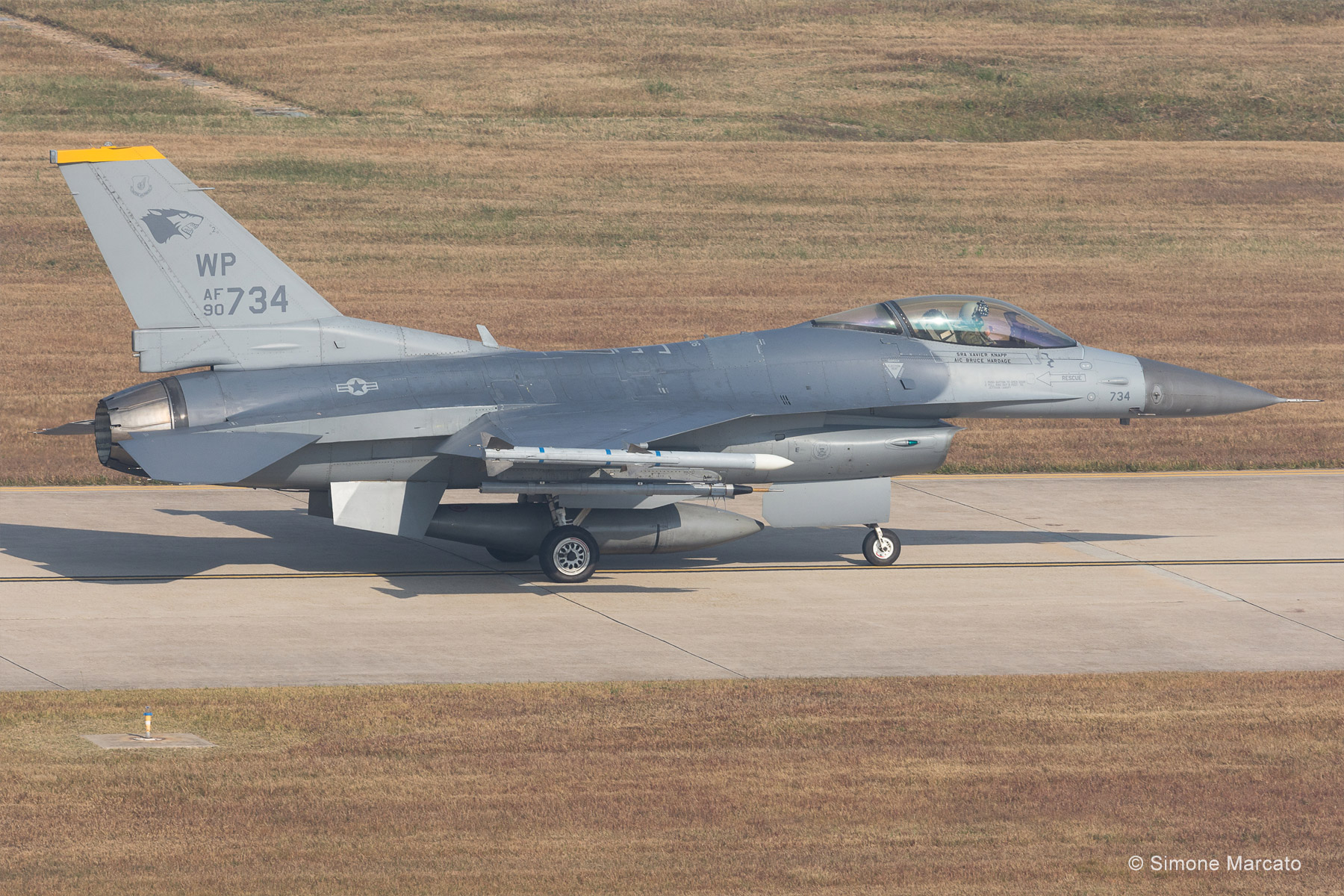
The relations between Americans and South Koreans within the base are excellent, and in this regard, the commander of the 8th FW, Col. David G. Shoemaker, says:
“The ironclad alliance between the United States and the Republic of Korea is evident in everything we do, and the saying ‘katchi kapshida’ (‘Let’s go together’) is strong at every level.” Here at Kunsan Air Base, we train for the defense of the peninsula and the region, working side by side with the ROKAF’s 38th Fighter Group to refine our combat capabilities and enhance interoperability between the USAF and ROKAF. We know that the threat is to the north, and our main mission is to ensure our operational readiness to deter an attack. Our goal is always the same: peace on the peninsula.”
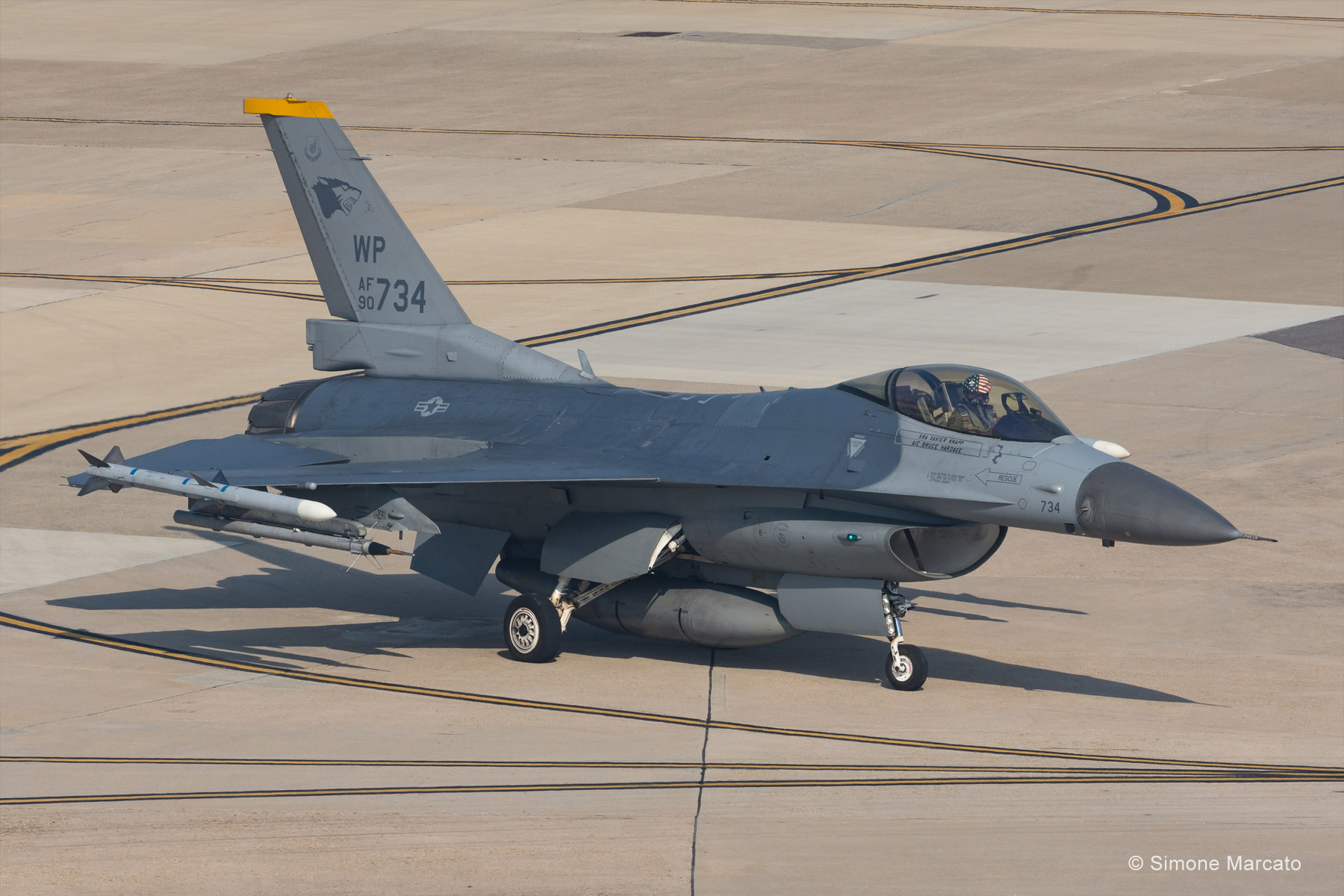
The ongoing tensions with North Korea, due to its missile and nuclear program, and the not always idyllic relations with China have led the United States to implement the so-called Theater Security Package or TPS, in order to guarantee and protect—similarly to what happens in Europe—the interests of the United States and those of their regional Allies in the Pacific theater, which has always been of fundamental importance to the United States.
With this program – since March 2004 – the USAF sends combat units stationed in the continental United States to the Korean Peninsula multiple times a year, on a rotational basis, to reinforce those present in the Korean Peninsula and regularly participate in joint bilateral exercises such as the annual VIGILANT ACE and MAX THUNDER.
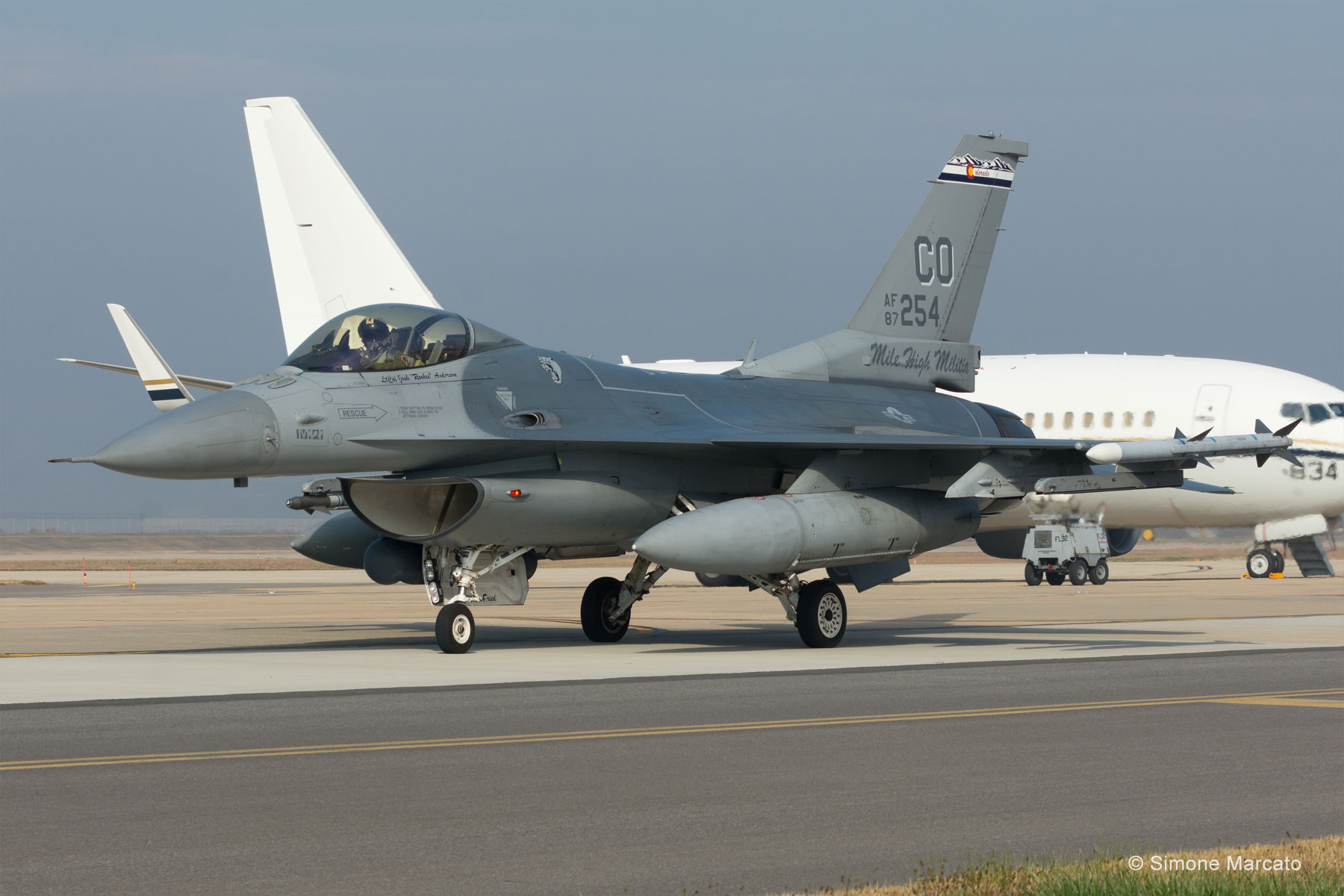
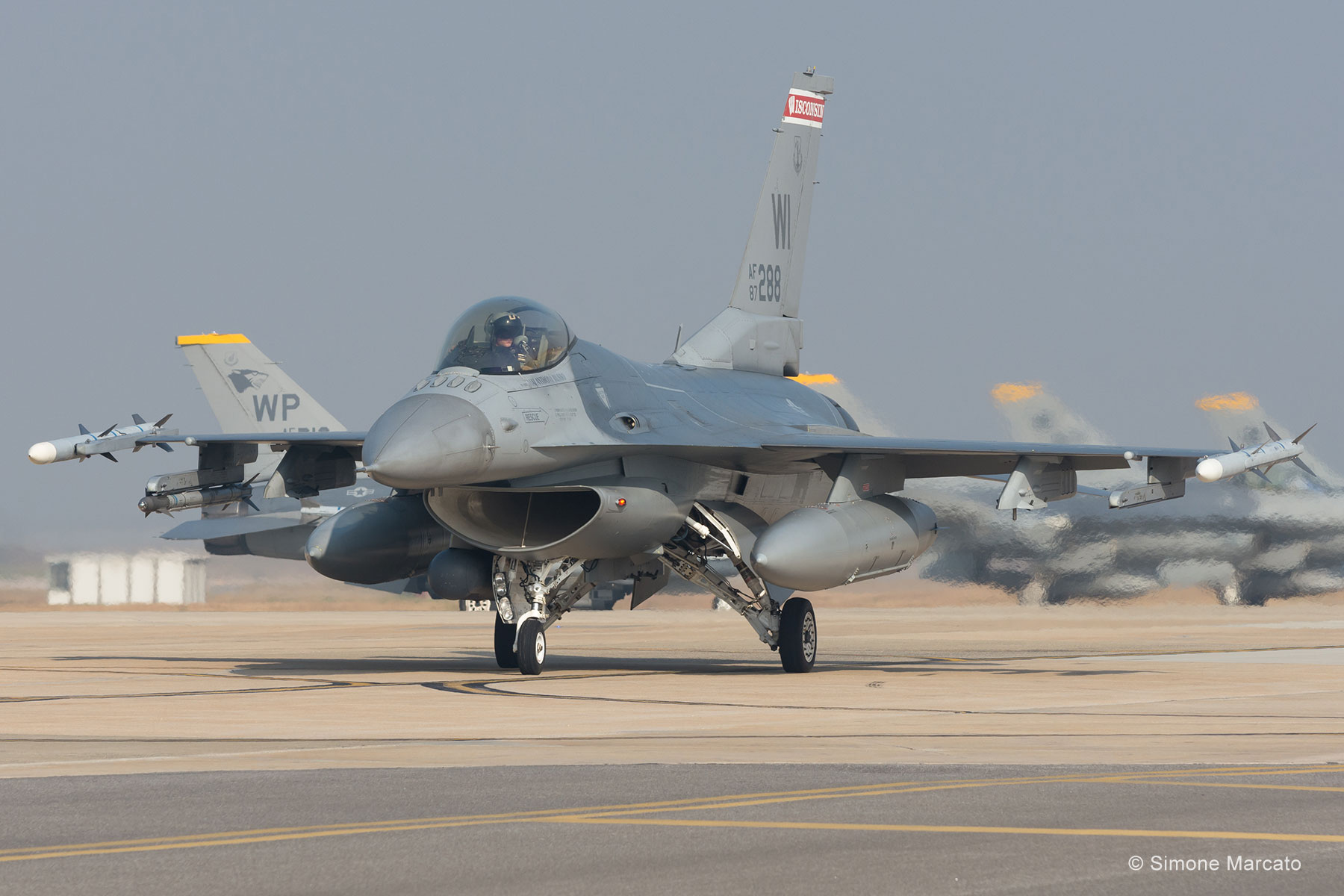
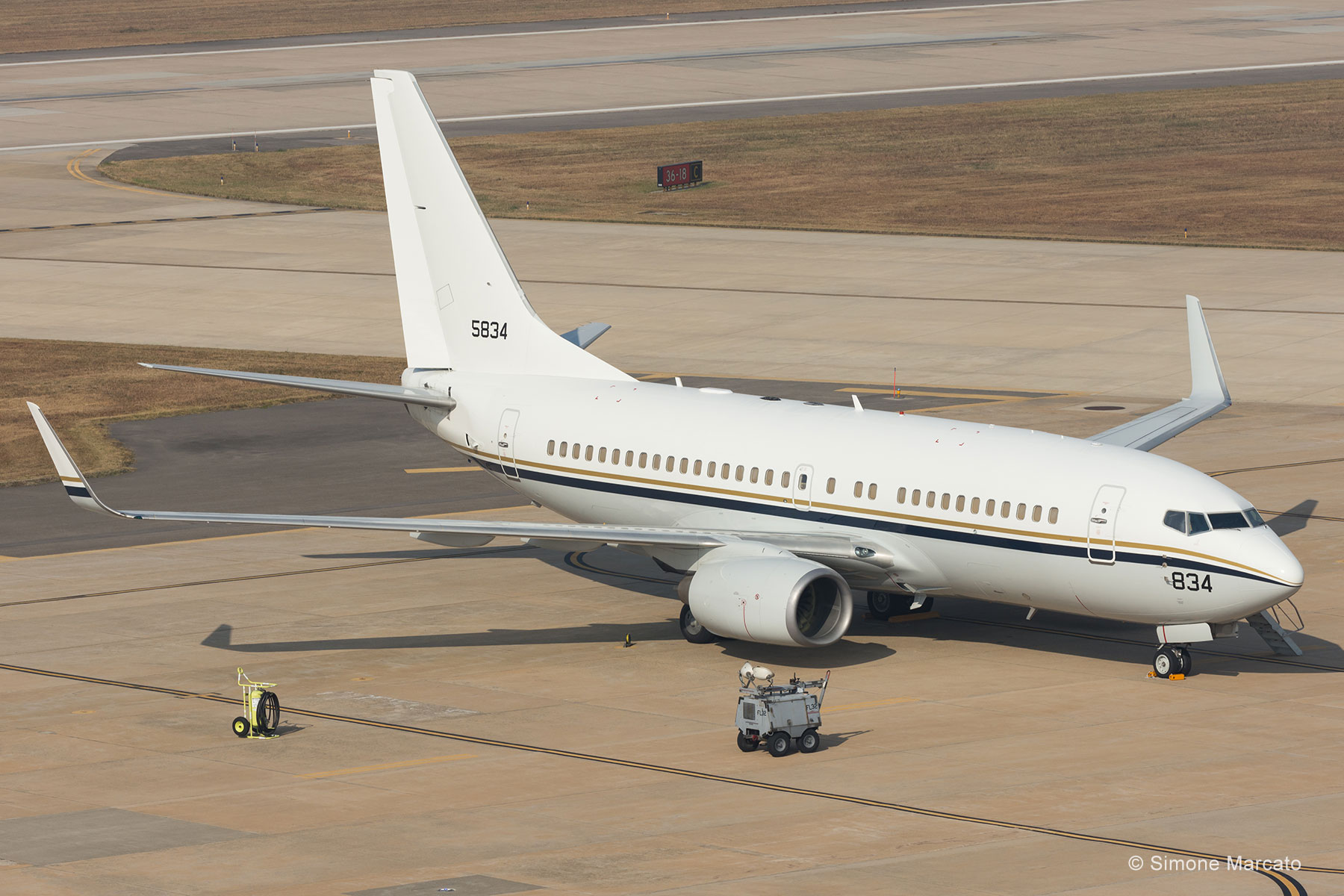
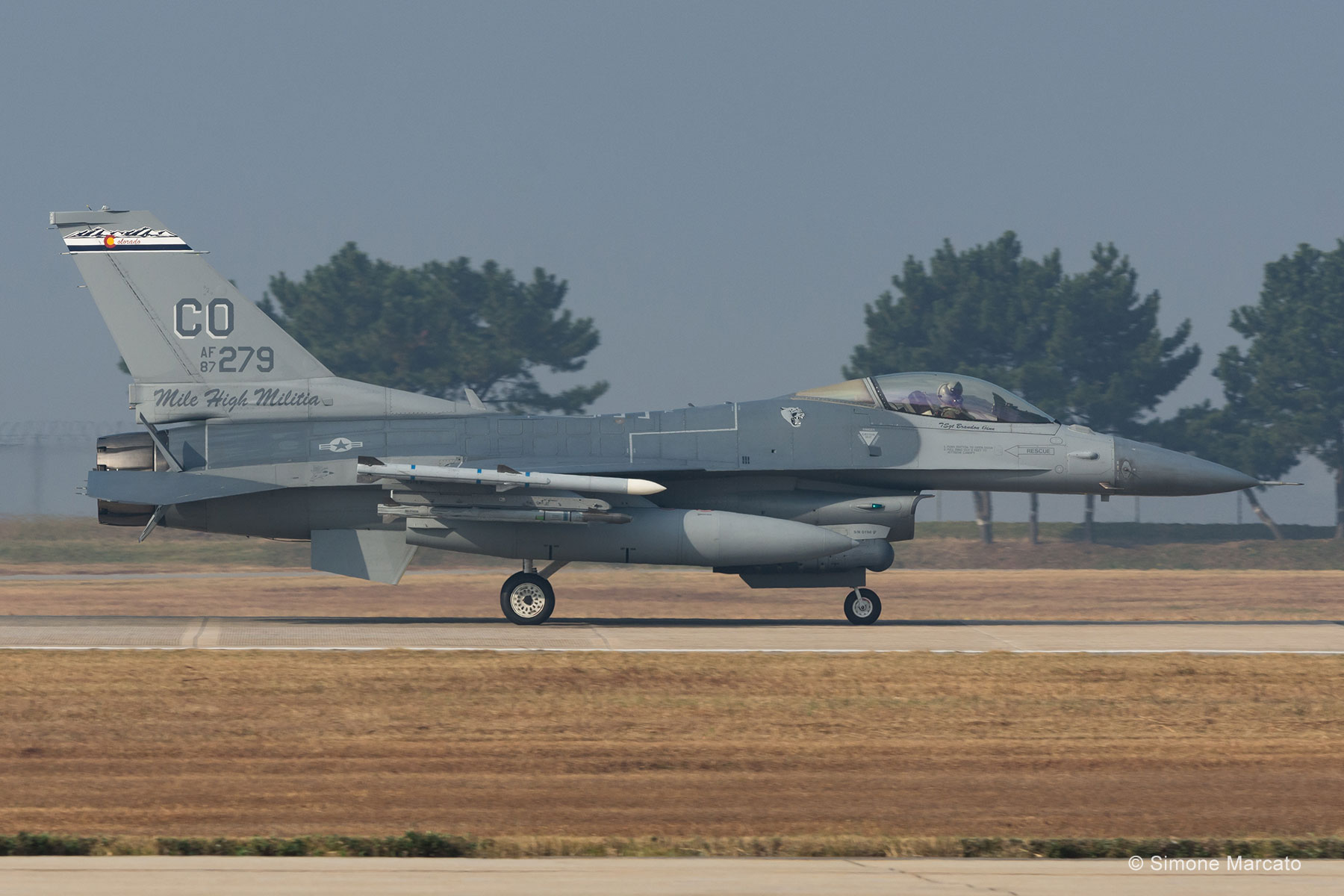
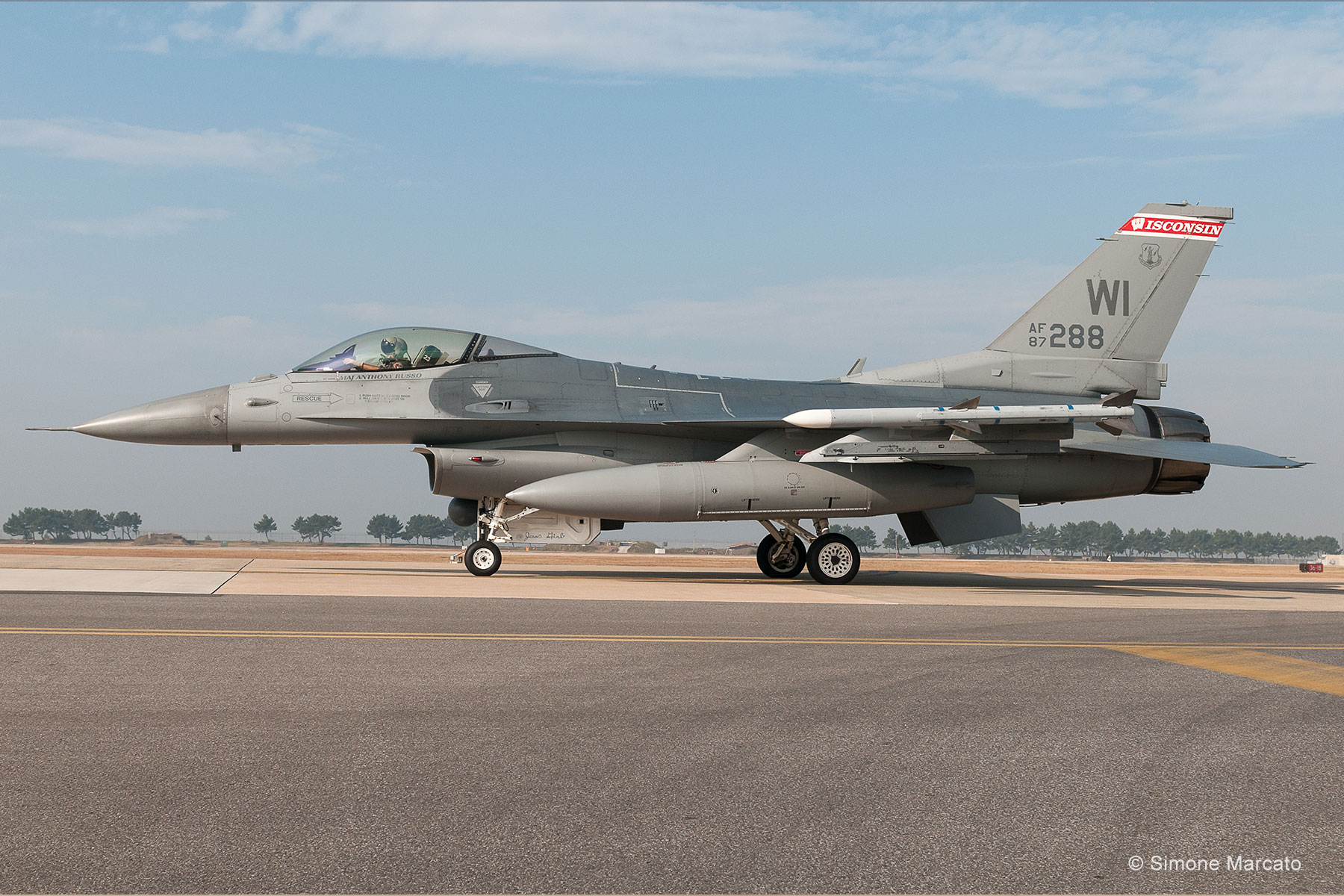
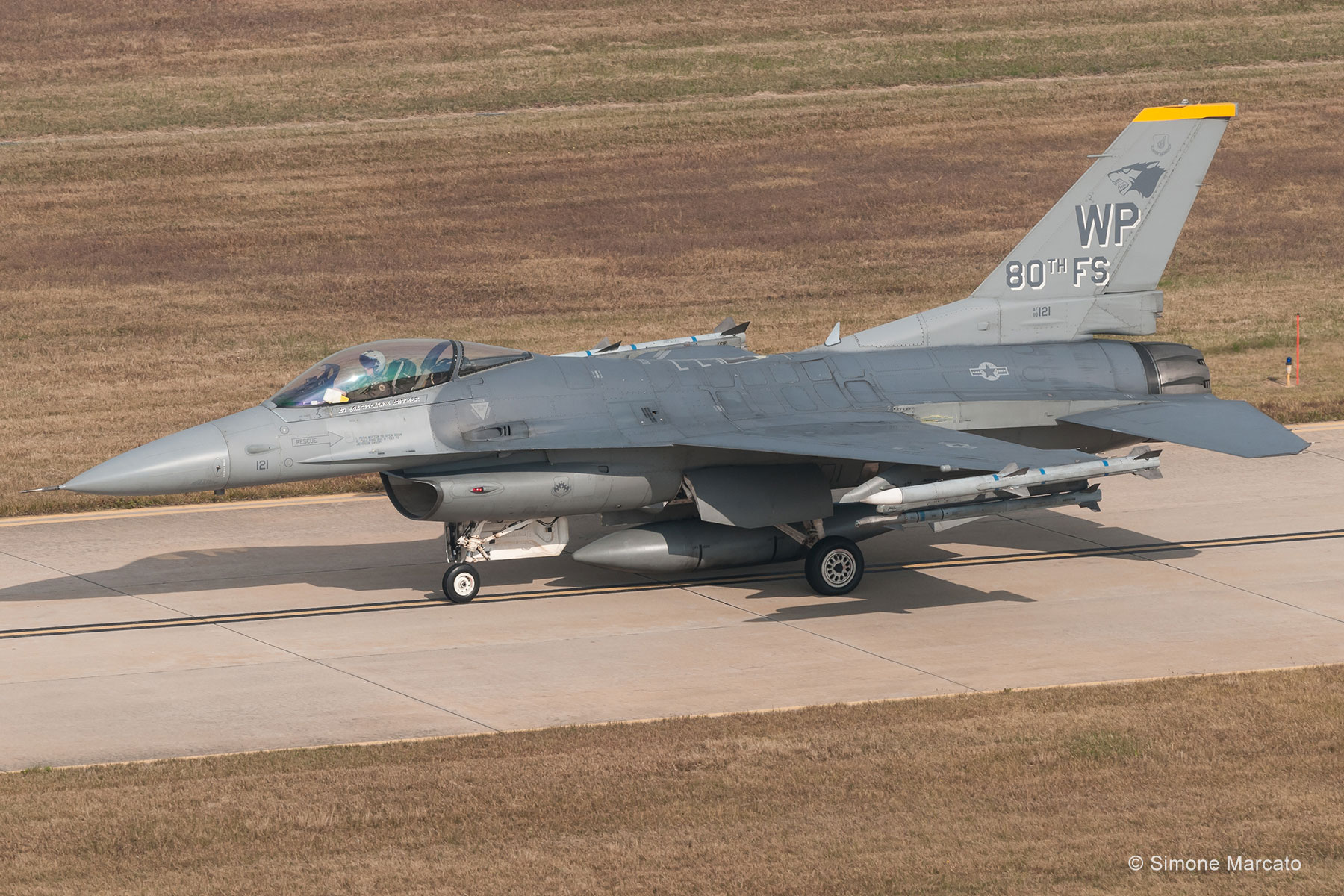
For this reason, it is not uncommon for the Wolf Pack of the 8th FW to find themselves operating side by side in daily training activities with many other U.S. combat units, further honing their traditional virtues of teamwork.
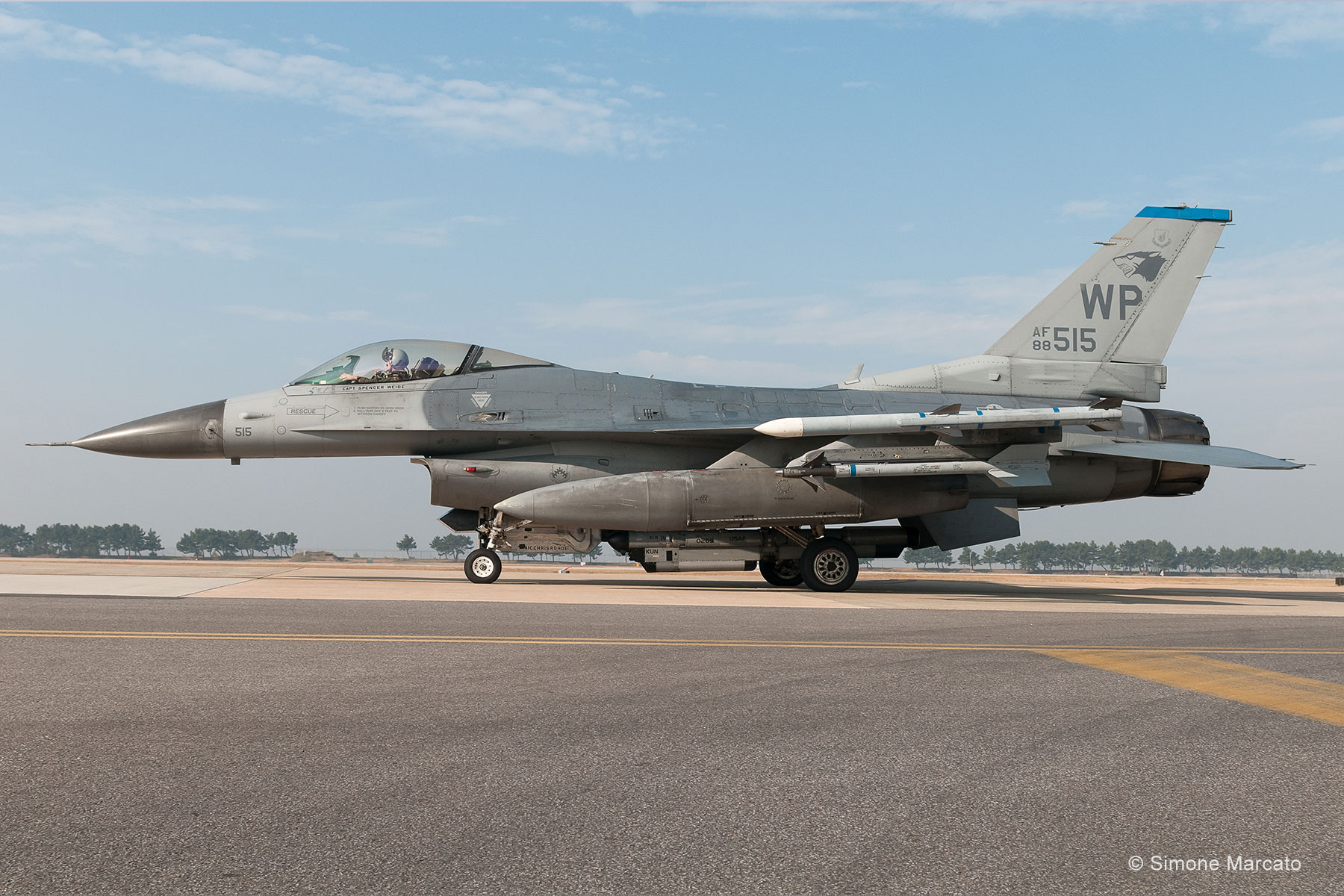
A special thanks to the Kunsan AFB for making this base visit possible.
Latest Blog Articles
- 50 Years of Turkish Air Force F-4 Phantom II
- AMX – Phase-Out 2024
- Base Aérea Monte Real
- Malta’s Alouettes
- The Italian way of fast jet training: 61o Stormo